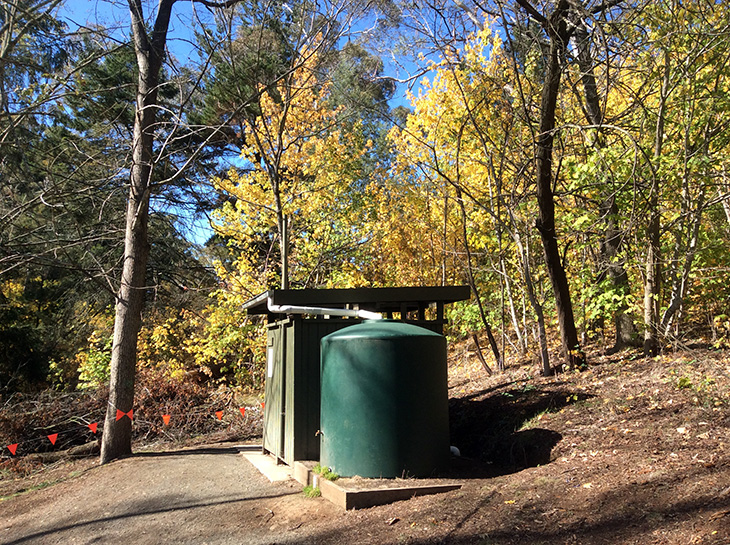Television, BULGARIA
In Bulgaria, there is a whole television channel devoted to traditional music and dance.

Fondation Vasarely, Aix-en-Provence, FRANCE
Vasarely was an artist interested in optical effects. He was one of the first Op artists. The Vasarely Foundation is in a building that looks like one of his sculptures. There are 16 hexagonal rooms with big works painted on the walls.
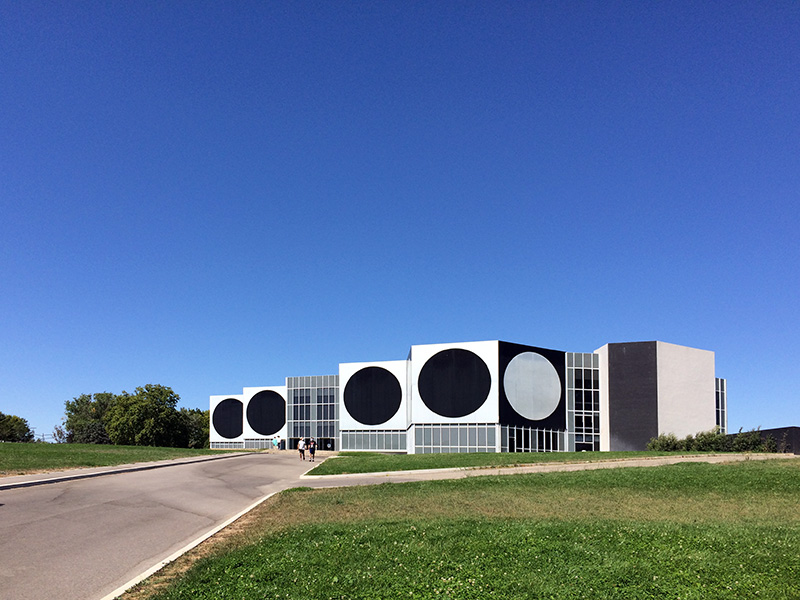
Paris, FRANCE
In Paris, you can take a bicycle from a stand in the street and park it somewhere else when you have finished. Some of the bicycles end up in the Seine.
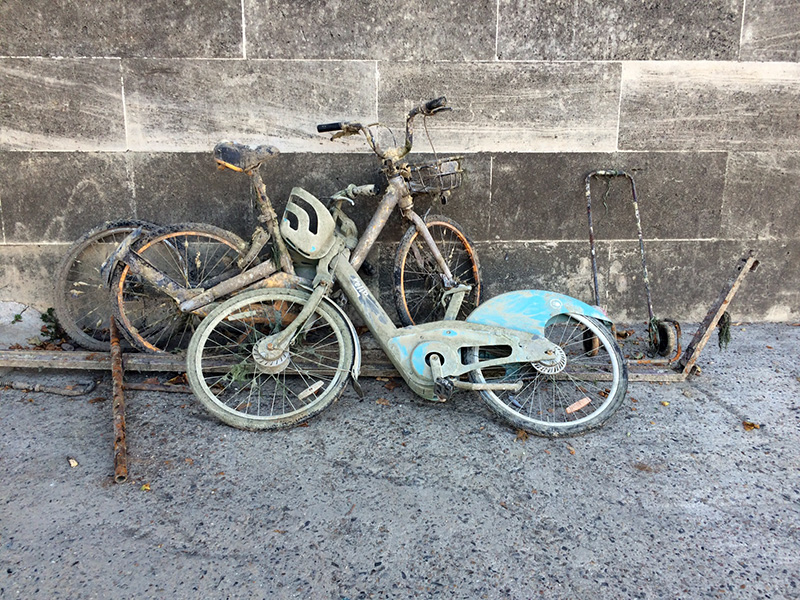
Vailly-sur-Sauldre, FRANCE
Farmers grow sunflowers for their seeds. People love sunflowers because they turn their heads towards the sun and remind us of summer.
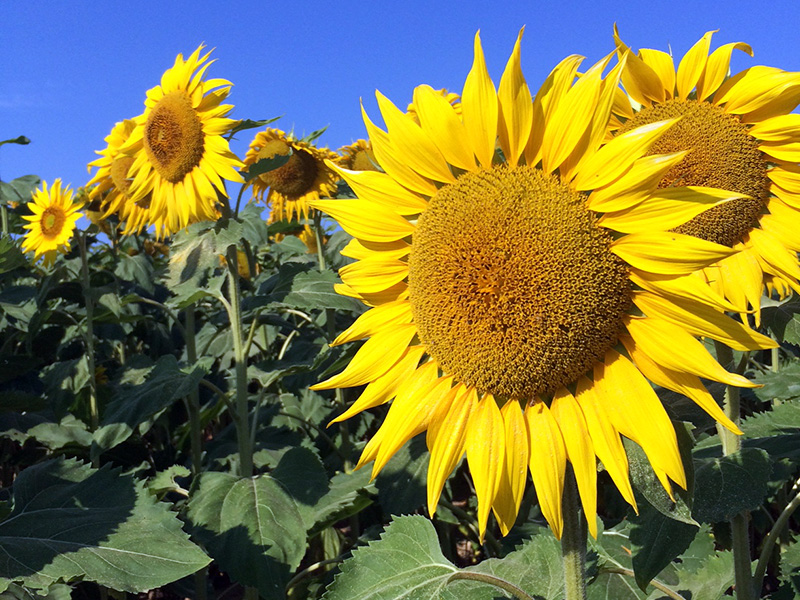
Vailly-sur-Sauldre, FRANCE
In the 7th century, there were pyramid-shaped barns like this all over France. The style comes from the North of Europe. Maybe it was introduced by invading Visigoths. Today there are only 30 left and most of them are in the Pays Fort region. This one was built on a farm in the early 16th century and moved next to the tourist office a few years ago.
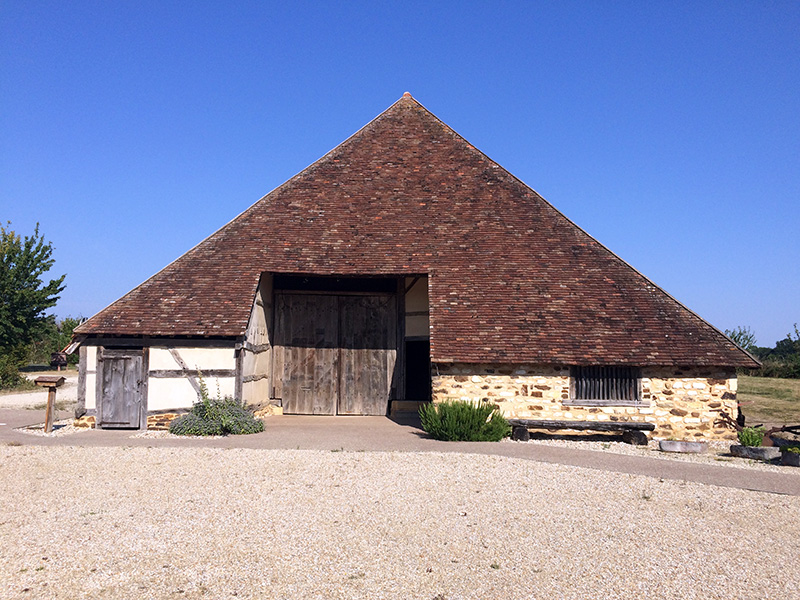
Paris, FRANCE
Schools and universities all over France are closed to protect people from coronavirus. And the Seine is flooded again.
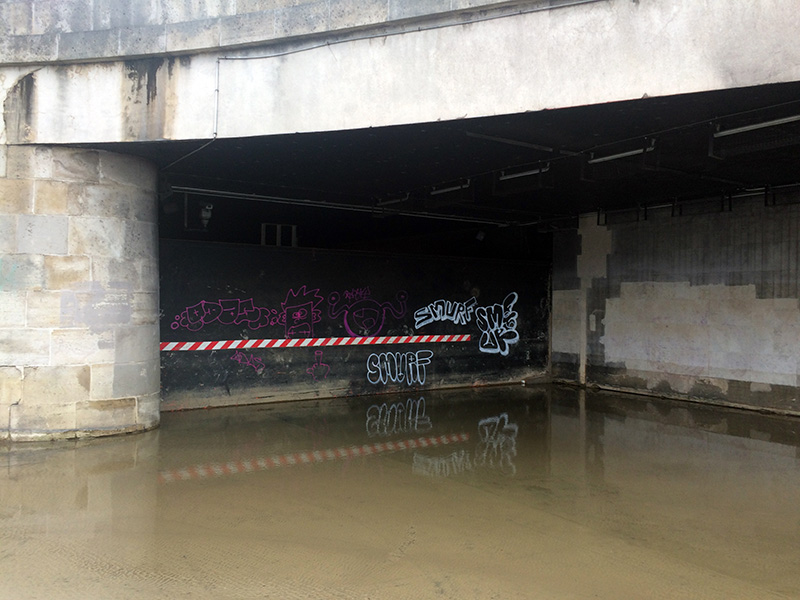
Paris, FRANCE
People are wearing masks to protect themselves from the new virus, Covid-19. I saw this couple on Saint Valentine’s Day.
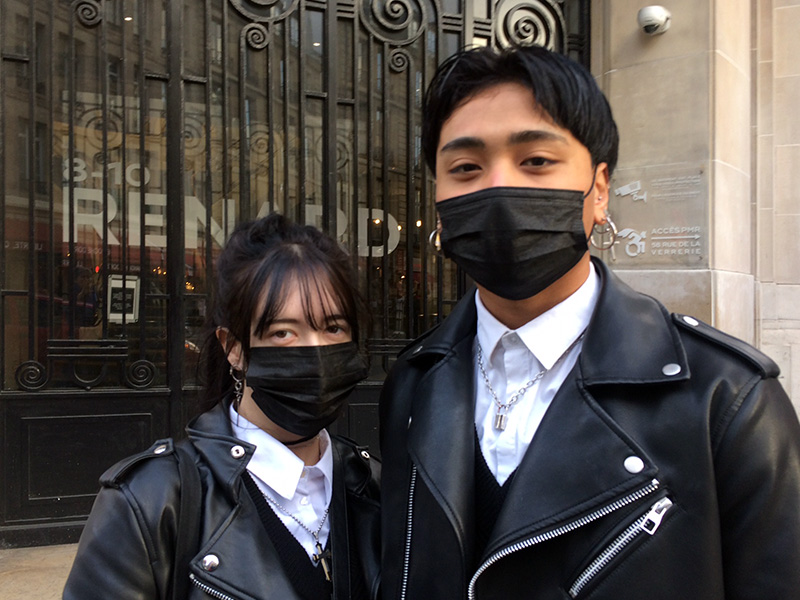
Truro, UNITED STATES
These houses are in the style of colonial architecture on Cape Cod in New England. They have a simple shape and wooden tiles on the outside. The tiles need to be replaced every 20 years so it is difficult to tell the difference between a house that is 300 years old and one that was just built yesterday.
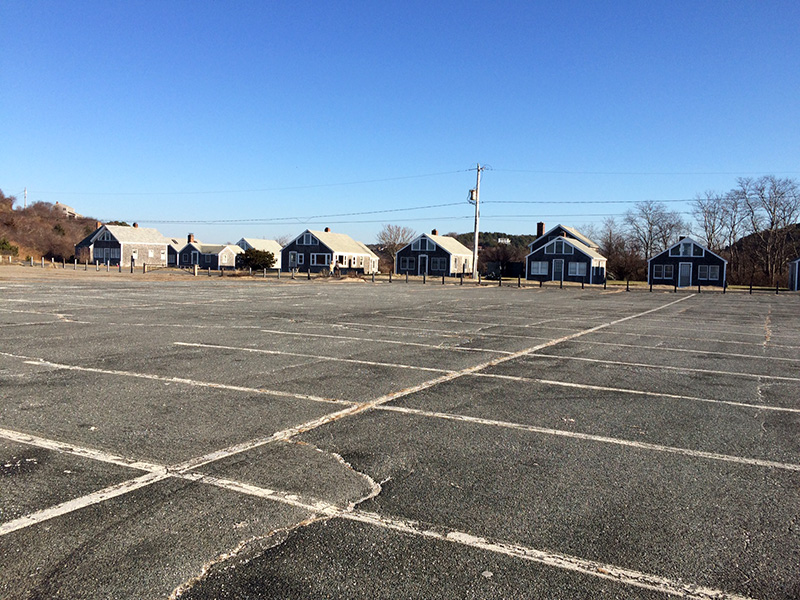
Provincetown, UNITED STATES
Provincetown is on Cape Cod, a two-hour drive from Boston. In winter, the population is 3,000 but in summer it is twenty times more because people come to spend their holidays there. The coast is very beautiful but it is falling into the sea. The municipality will soon tell the owners of this house to evacuate because it is too dangerous to live there.
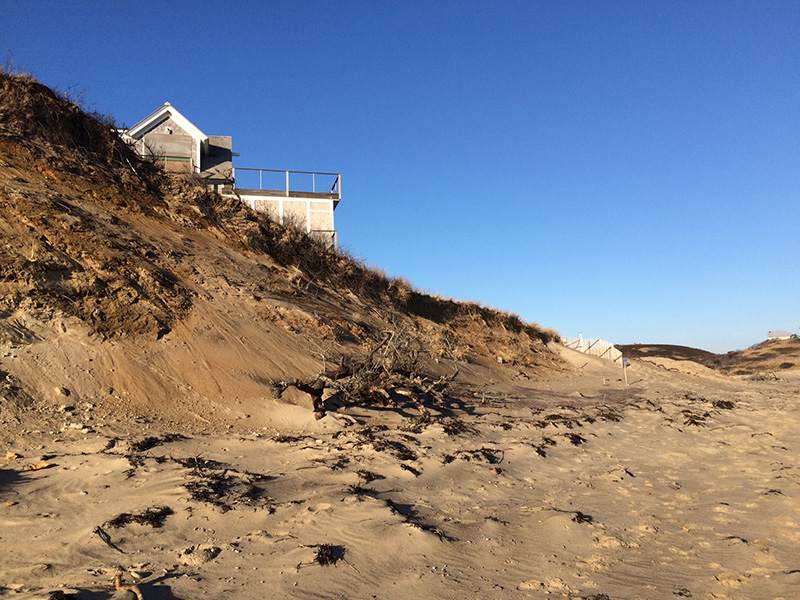
Paris, FRANCE
People like seeing trees in big cities like Paris. There is not much land available so sometimes plants grow on walls. Looking after a garden like this is complicated!
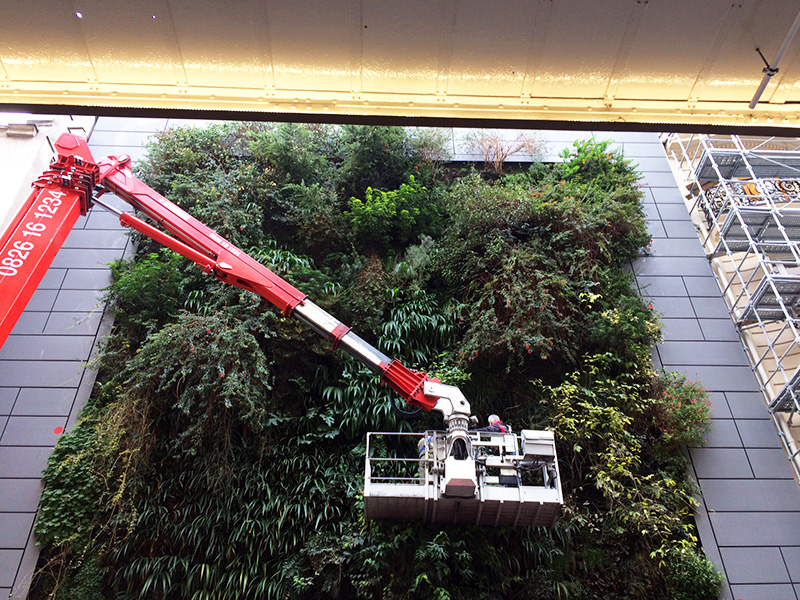
Montauban Cathedral, Montauban, FRANCE
The cathdral in Montauban was built from 1692 to 1739. Today they are building an underground parking lot on the square so the faithful will not be late for mass.
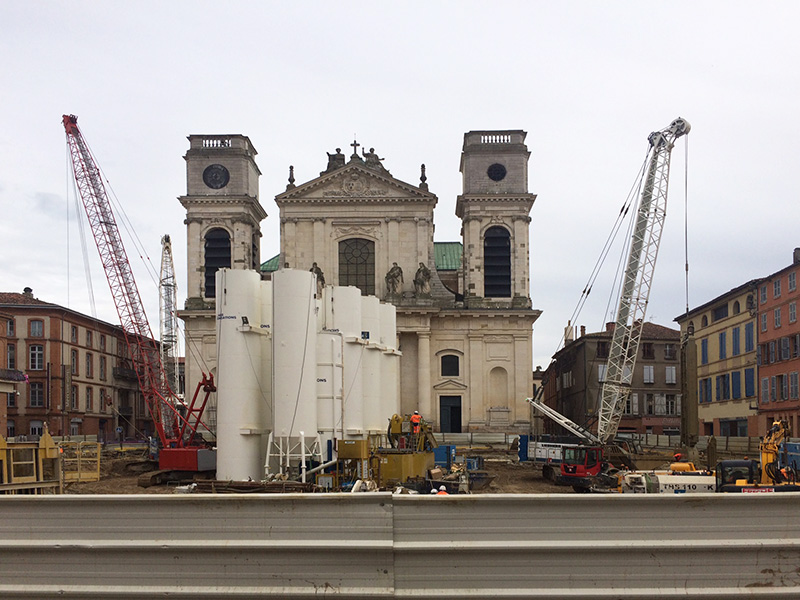
Buttes-Chaumont, Paris, FRANCE
Buttes-Chaumont park is in Paris. It was once a quarry but Napoleon III decided to turn it into an English-style garden. This is the artificial waterfall inside the artificial cave. There are artificial stalactites. Everything is made of cement but real bats live in there.
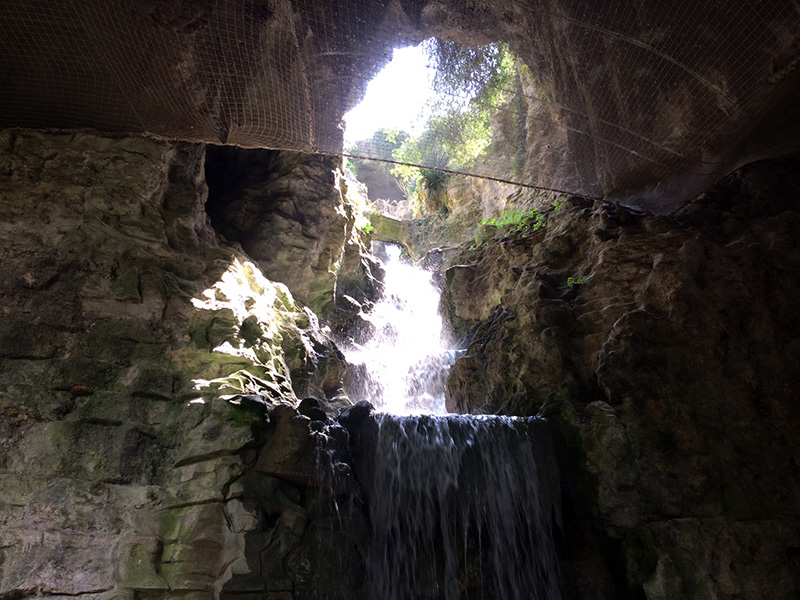
Jardins de Bagatelle, Neuilly, FRANCE
A friend from Australia wanted to see the roses at the Bagatelle gardens. But they were all nearly dead because of the heat. We also saw these different types of wheat. They were much better suited to the weather.

Louvre, Paris, FRANCE
Today I saw two soldiers with machine guns under the Louvre pyramid. Nearby, a group of tourists sat on a bench eating a picnic.
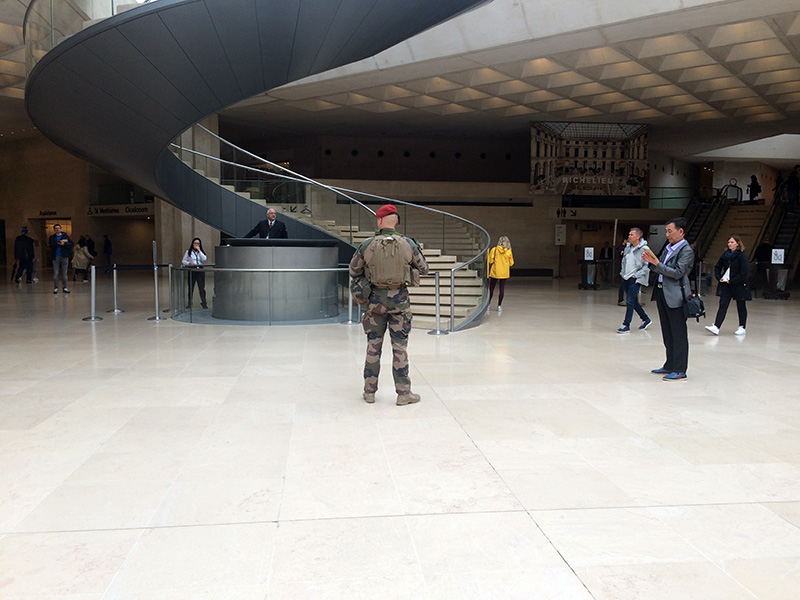
Paris, FRANCE
I was walking past the Palais de Tokyo art center when I saw these two men breathing fire. The things some people do for fun!

Louvre, Paris, FRANCE
30 years ago, a new entrance was created to get inside the Louvre museum. It is a big pyramid in the middle of the courtyard, designed by the architect Ieoh Ming Pei. To celebrate the anniversary, the artist JR did an artwork in the courtyard. 400 people covered the ground and the pyramid with paper. But it didn’t last very long. Two days later, it was a big mess and cleaners started sweeping it away.
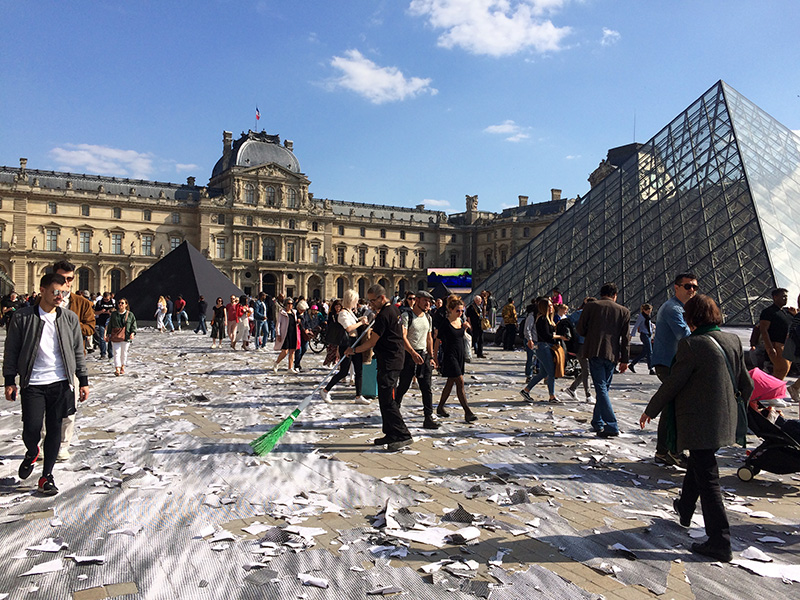
Narrenturm, Vienna, AUSTRIA
This building is called the Tower of Fools (Narrenturm in German). From 1784 to 1866, it housed people with mental illnesses. There was no treatment. The patients were locked up. The Anatomy and Pathology Museum lives there now. You can see human foetuses in jars and bionic arms. The most disturbing things in the collection are kept upstairs. Only medical students and researchers can see them (by appointment).
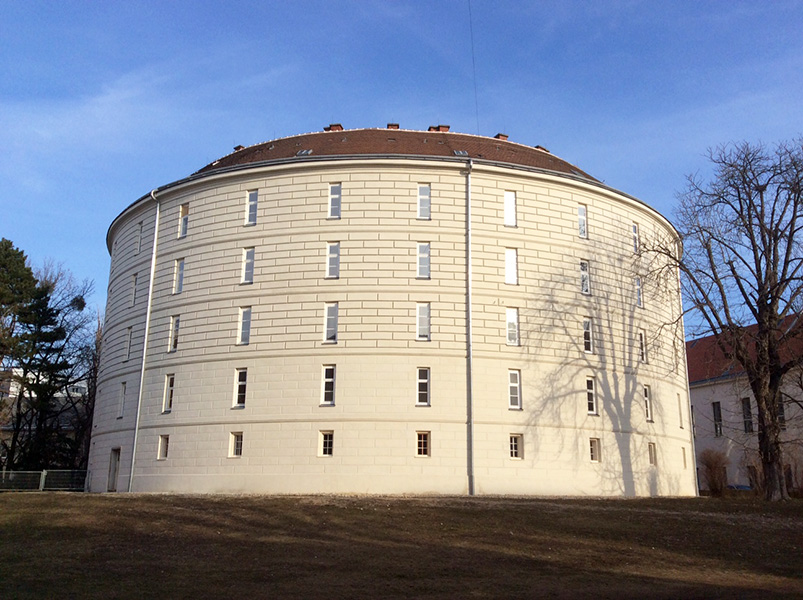
Bretagne Emaillage, Héric, FRANCE
This is a workshop in the industrial zone near Nantes. They make signs using steel and enamel. Sometimes the signs are designed by artists. Sometimes they are lists of stations for the Paris metro. Enamel is a mix of pigment and glass that is heated at a very high temperature. It is very strong.
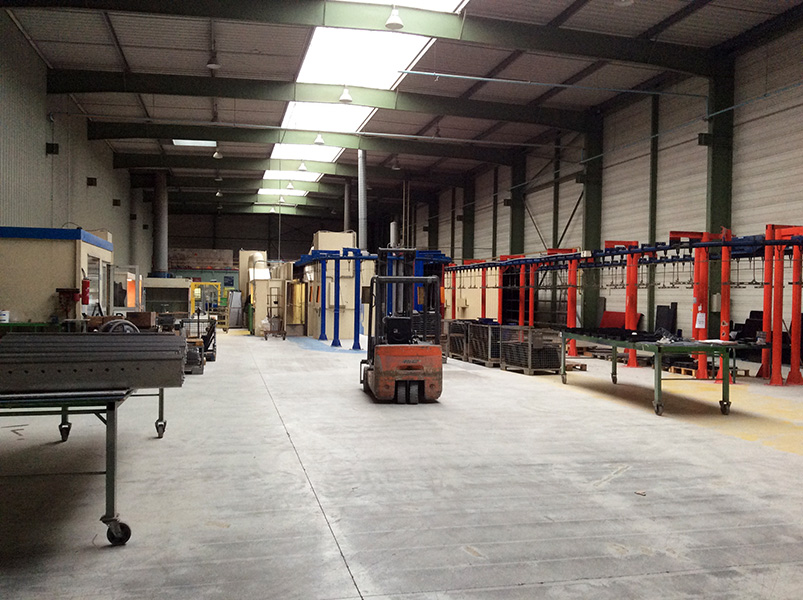
Brad, RUMANIA
Brad is a small town in Transylvania. The population is about 15,000. There were gold mines nearby but they have closed. Brad has the only gold museum in Europe. Their notice boards are in the colours of the Rumanian flag.
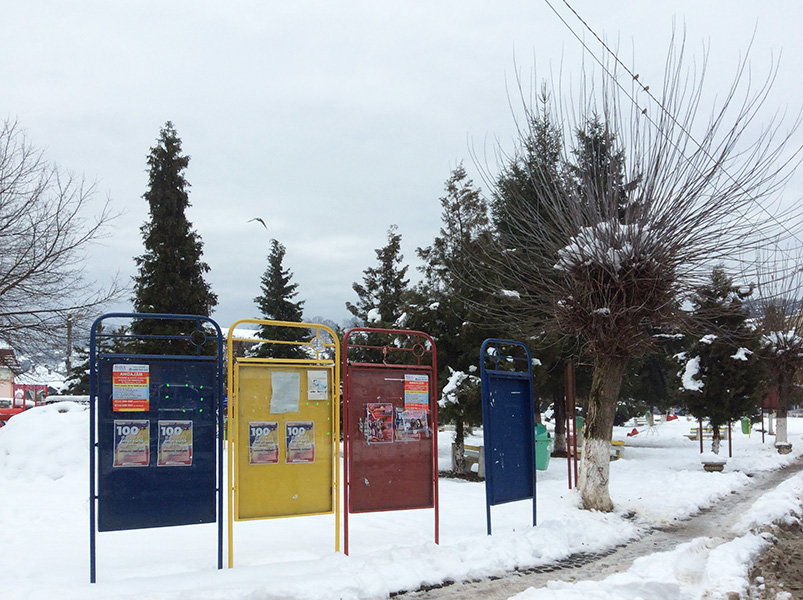
Sibiu, RUMANIA
Sibiu is a city in Rumania. It was settled by Germans in the 12th century. They called it Hermannstadt. Most of the Germans left after the First World War but the city remains multicultural. At the Christmas market in the main square, all the Christmas carols were in English.
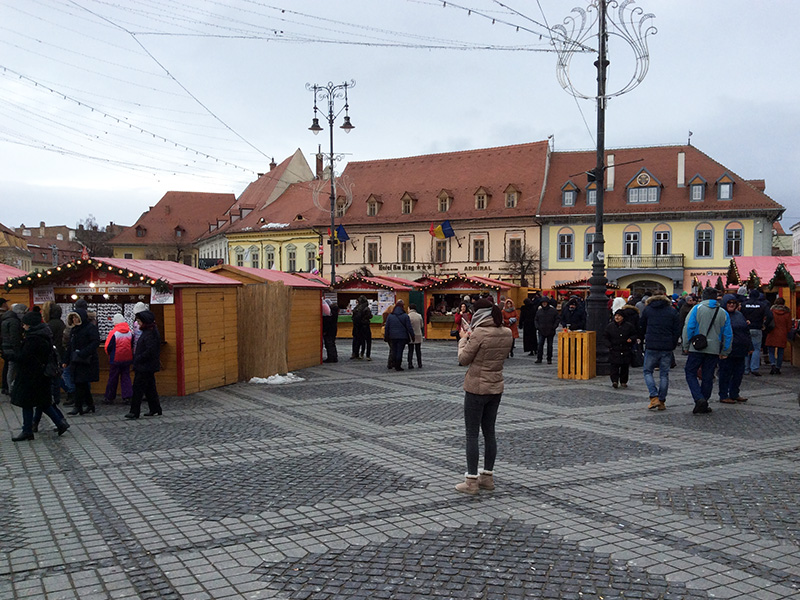
Africa Museum, Tervuren, BELGIUM
Belgium once colonized parts of Central Africa. The King of Belgium built a museum to show off “his” colony. Today, the countries are independent and most people are embarrassed by the way the museum represented African people. It needed to change. So they closed for 5 years to think about how to do it. To show a different approach, they changed the entrance to the museum. Now you enter through this tunnel underground.

Paris, FRANCE
This is a demonstration of yellow vest protesters one Saturday morning. It is the day all the museums in Paris were closed because of fears of violence. They seemed peaceful, maybe a little bored. That night, I saw riot police firing tear gas on Place de la République. The next day I saw four shops with broken windows.
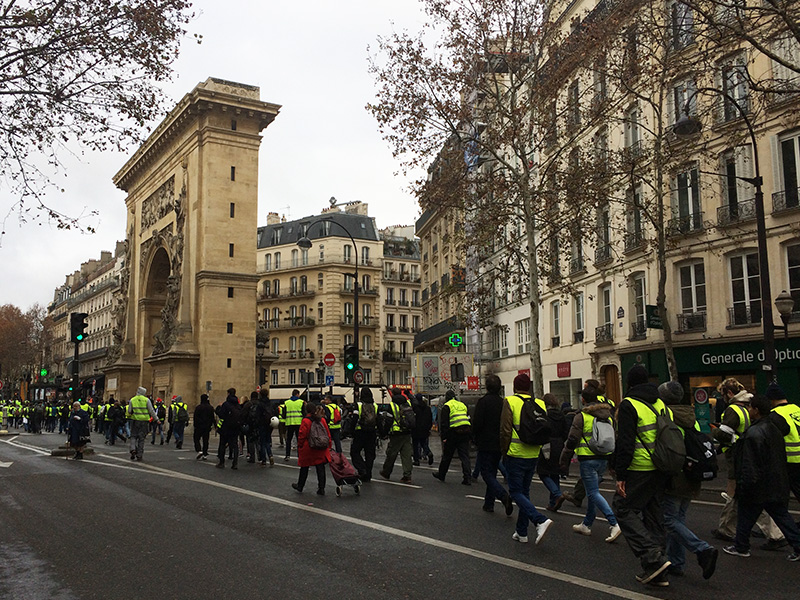
Paris, FRANCE
This is an installation by the artist Tomas Saraceno. It is part of an exhibition at the Palais de Tokyo museum in Paris. He is inspired by spider webs. You can walk around and touch the wires to make sounds.
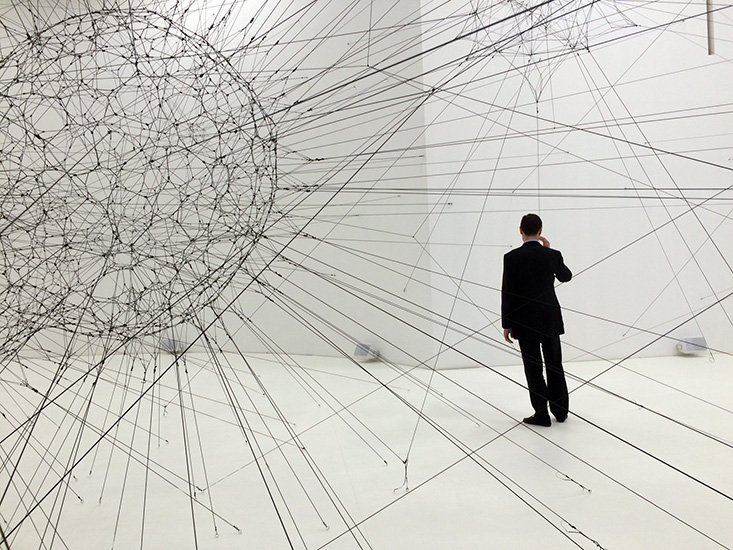
Vienna, AUSTRIA
I went to Vienna to see a big exhibition by Breughel, a Dutch painter from the 16th century. Three-quarters of all the work he ever did was here. And it seemed that three-quarters of the population of Vienna came to see it.
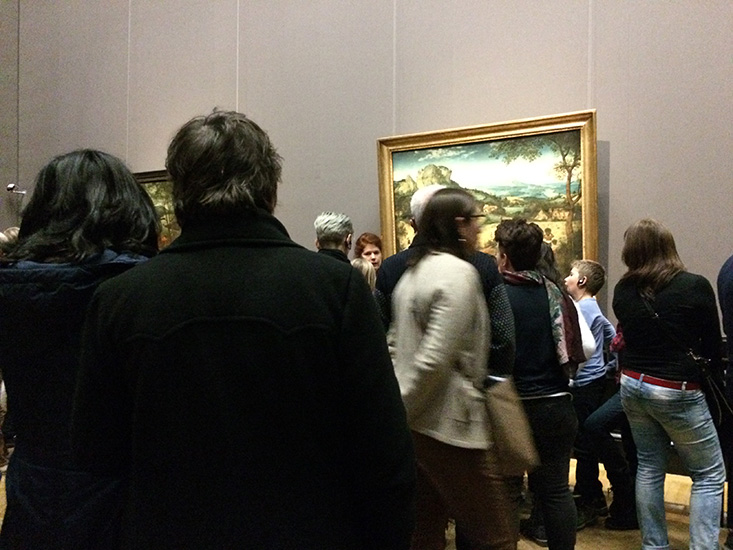
Vienna, AUSTRIA
Every winter, Christmas markets appear all over Vienna. You can buy sausages and hot wine, gingerbread and Christmas decorations. People stand outside in the snow eating and drinking.
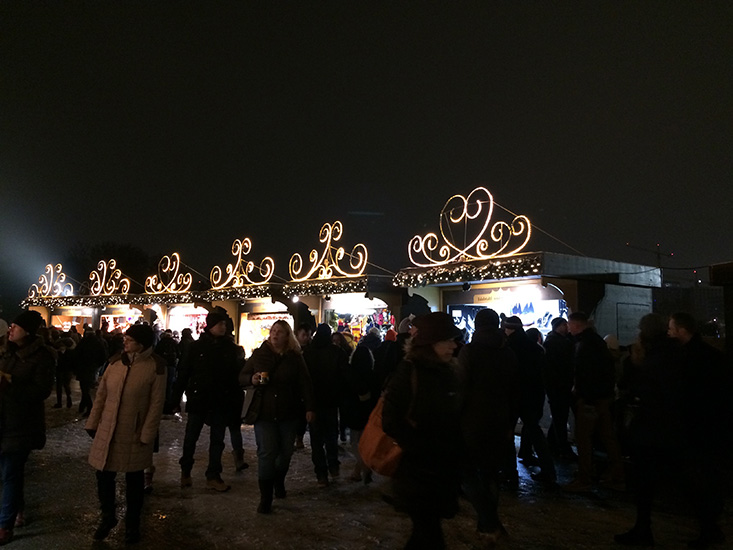
Werris Creek, AUSTRALIA
At the Werris Creek Railway Museum, they give the recipe for the “coffee” they served there in the 1940s. It was made of water, mustard and salt. They boiled it all night until it went black. Today you can get good coffee nearly everywhere in Australia (with pictures on top).

Paris, FRANCE
A friend invited me to watch the Bastille Day celebrations from his balcony. He lives a long way from the Champs Elysées but he likes to see the army’s planes fly overhead. Every year fighter jets start the display with red, white and blue smoke coming out the back. This year, they flew too low and were hidden behind other buildings. We saw the other planes. This big one looked like an airbus.
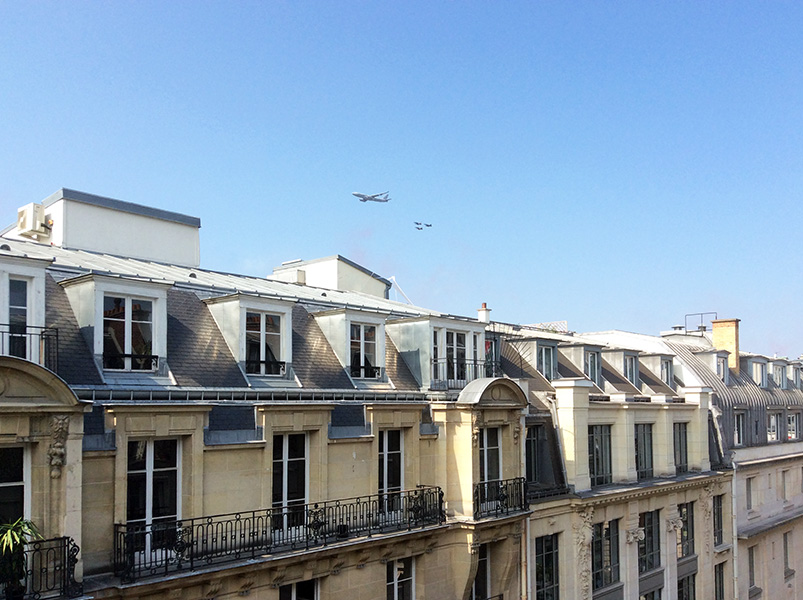
Paris, FRANCE
Every year, Paris has a gay pride march. Enormous trucks carrying dancers and booming music drive slowly through the streets. Crowds of people walk along with them, some of them dressed in feathers, some of them hardly dressed at all. It is a big summer party. Some of the trucks have more serious messages. This one reminds people that homosexuality is punished by death in 12 countries.
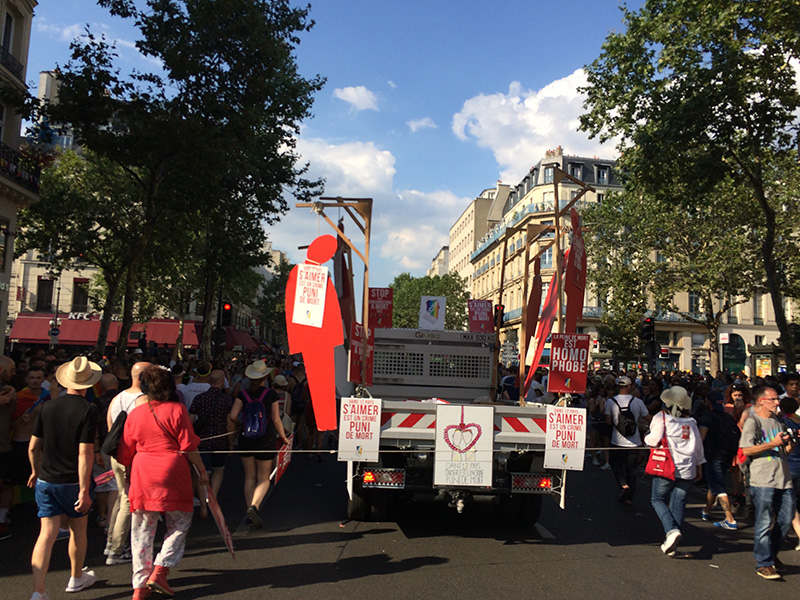
Alberobello, ITALY
My hotel was in Bari but there was not much to see. So I asked Google where to go and Google sent me to Alberobello. When I arrived, I saw tour buses everywhere. The tourists wanted to see the village of houses with stone cones on top. All the houses sold souvenirs. Google does not understand that I do not like this kind of tourism.
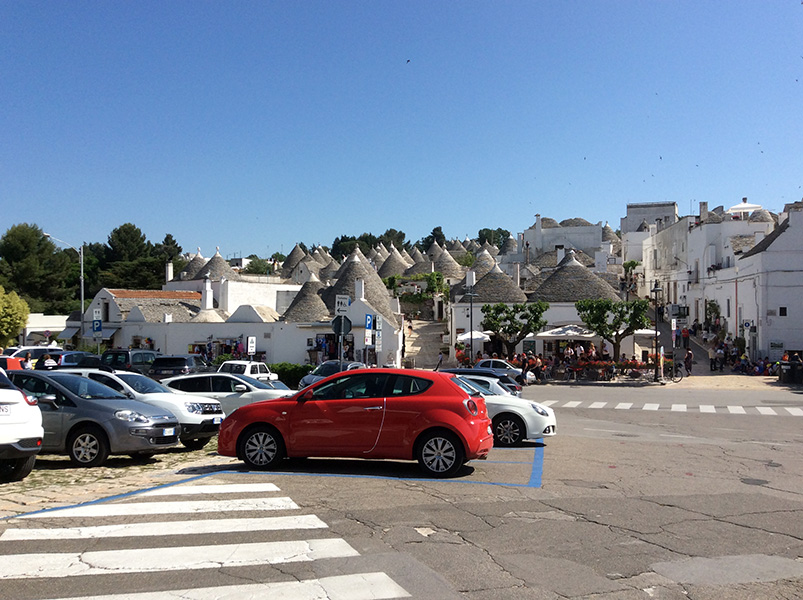
Matera, ITALY
Matera is famous for the caves where people lived from the 12th century to 1952. But the government decided to move them to housing projects in the suburbs for their own good. Today, most people think this was a bad decision. It destroyed the community. The caves are a tourist attraction now. In 2019, Matera will be the European Capital of Culture. There are building projects everywhere.
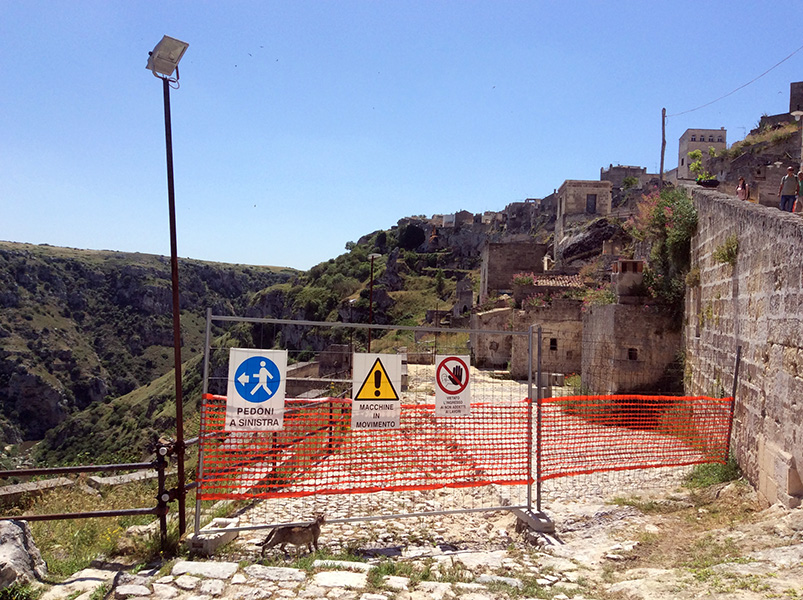
Centre Pompidou, Paris, FRANCE
Every year, at the modern art museum at the Pompidou Center, they move everything around. They bring artworks out of the archives and put others away. Each time, there is a new theme. At the moment, they want to show the history of their collections. There are big, wall-size photos in black and white of the museum in the old days, with the same paintings hanging on top. It shows that the way to hang a painting changes over the years but the art itself is timeless.
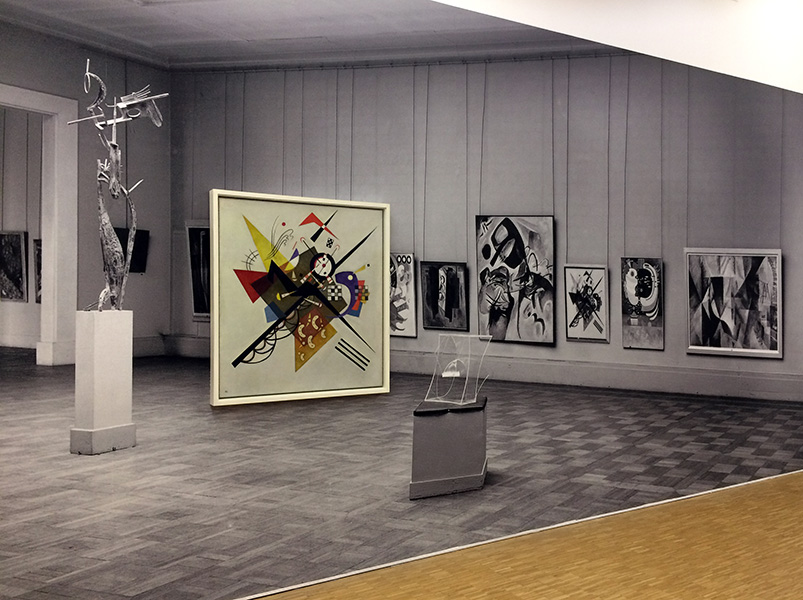
Place de la Concorde, Paris, FRANCE
This is the Ferris wheel on Place de la Concorde. Tourists love it because from the top you can see all over Paris. But the Paris Council says it stands in the way of the perspective that runs from the Louvre to the Arc de Triomphe and has no place on a heritage site. The Ferris wheel has to go but the owner refuses to take it down.
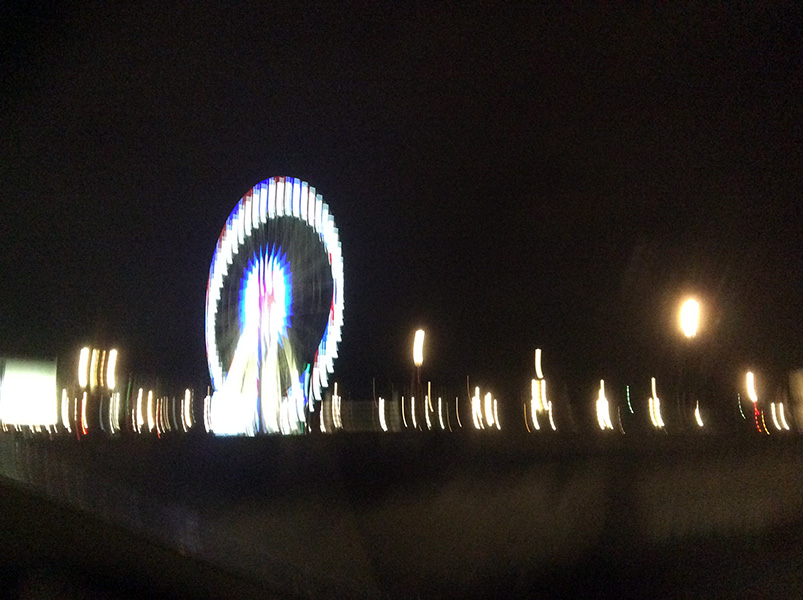
Paris 8 University, Saint-Denis, FRANCE
When police expelled hundreds of migrants from under a bridge in Paris, a group of students decided to invite some of them sleep in the art classrooms at the university. Most people in the university were happy to help, especially when it started snowing outside. They brought food and blankets. But some of the students couldn’t do their art classes so they had to borrow classrooms from other departments. Nobody knows what will happen next. The migrants want papers so they can start new lives in France.

Paris, FRANCE
Paris is magical when it snows… But the trains stop running, people can’t get to work and you get wet feet if you walk. Luckily, it only happens every three or four years.
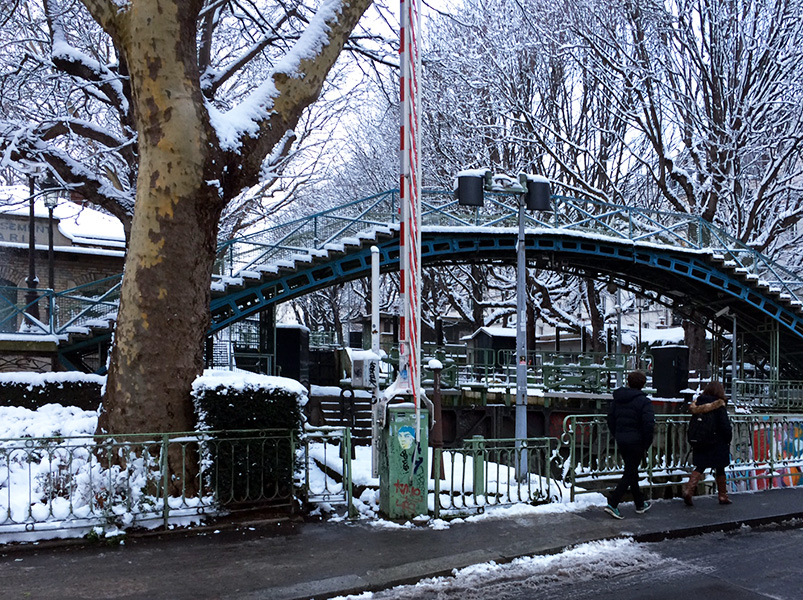
Seine, Paris, FRANCE
This is what the motorway along the Seine looks like when it floods. In 2016 when there were even bigger floods, all the museums along the Seine had to close. Rats popped up in the toilets at the Petit Palais!
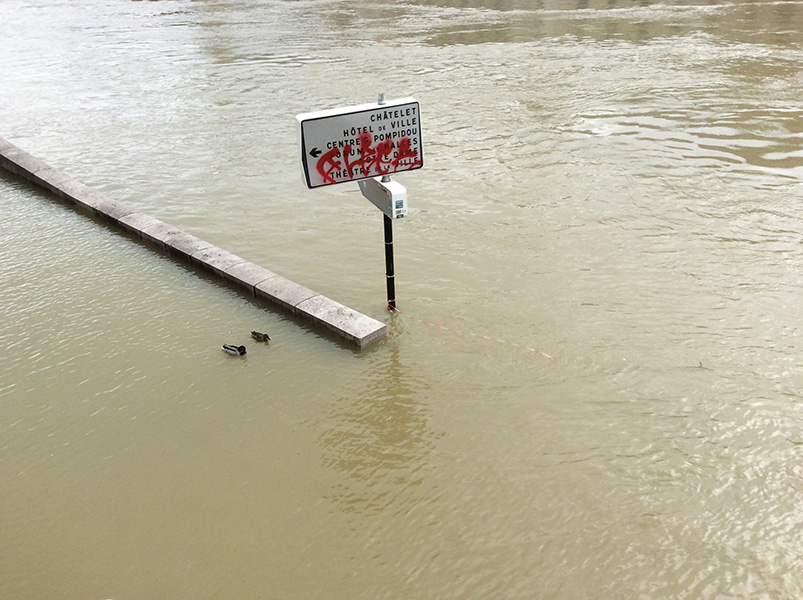
Venice, ITALY
When it rains in Venice, all the tourists visit museums. And the museums smell like wet dog.
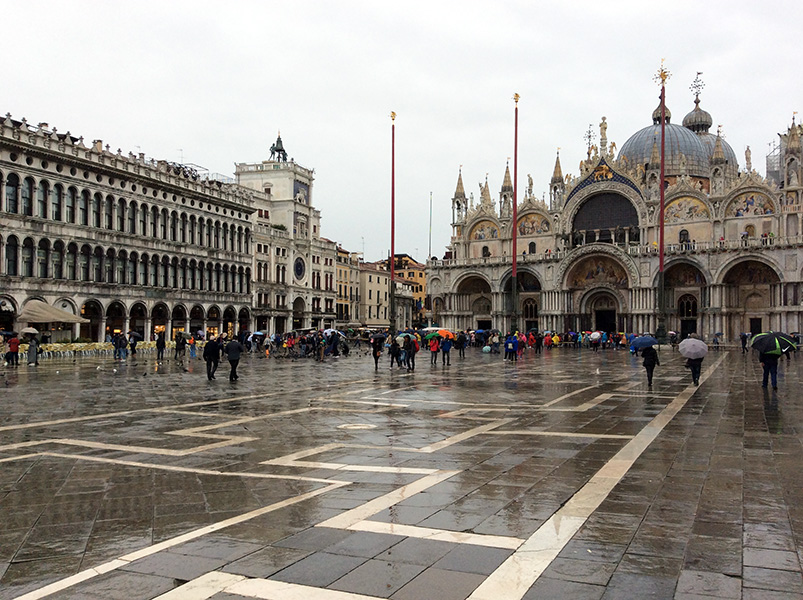
Kassel, GERMANY
Kassel is a city in the centre of Germany. It makes military weapons so during World War Two, British planes bombed Kassel. In one night, 80% of houses were destroyed. Today, the architecture is mostly from the 1950s. Every five years, Kassel holds the Documenta, a big festival of contemporary art. And every five years, artists complain that Kassel is still making weapons.
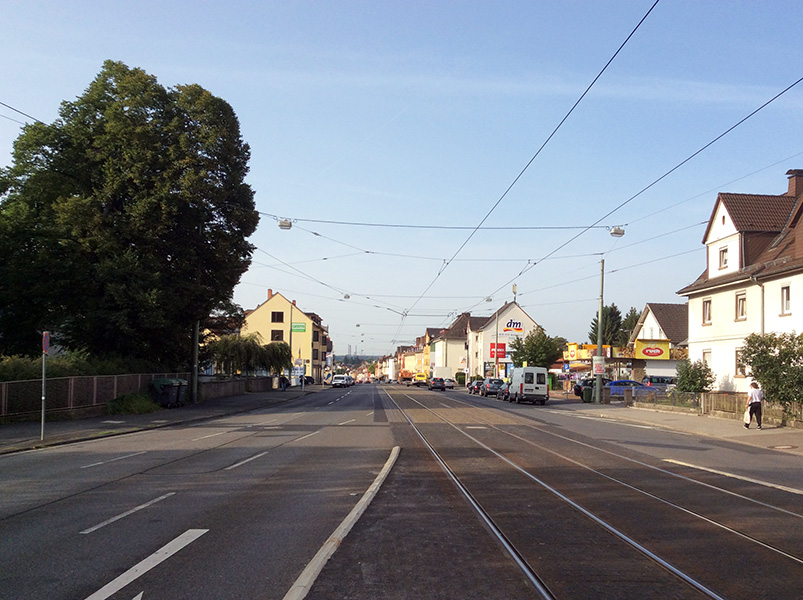
Documenta, Kassel, GERMANY
This is the Pantheon of Books by Argentinean artist Marta Minujin. It is her artwork for the Documenta contemporary art festival in Kassel. She wants to remind people that the Nazis burned books here in Kassel during World War Two. The temple is covered in books that are banned in some countries today or were banned in the past. Kassel University made a list and asked people to donate books. I saw six copies of Harry Potter.
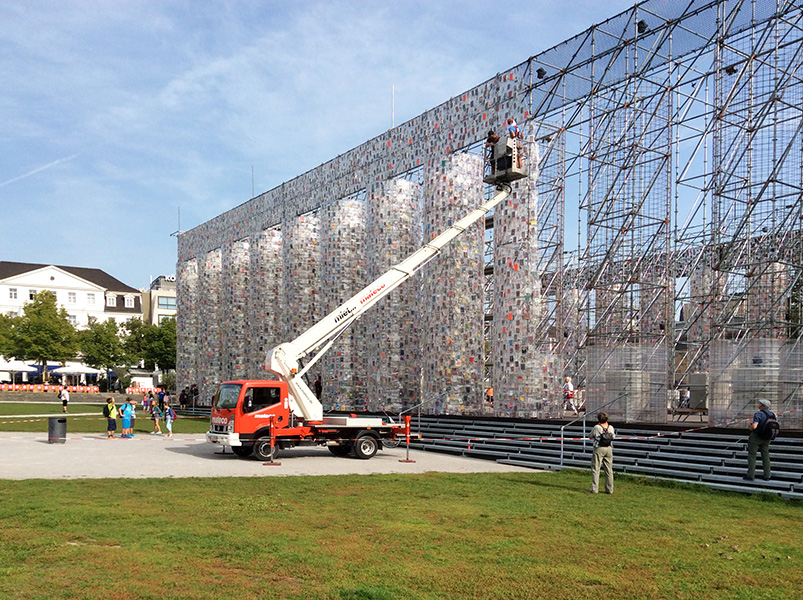
Purna Bhakti Pertiwi Museum, Jakarta, INDONESIA
Suharto was the President of Indonesia from 1966 – 1998. He was a dictator but world leaders still gave him many diplomatic gifts. In this museum, the gifts are on display. The museum is in the shape of Javanese rice cones to symbolize gratitude.
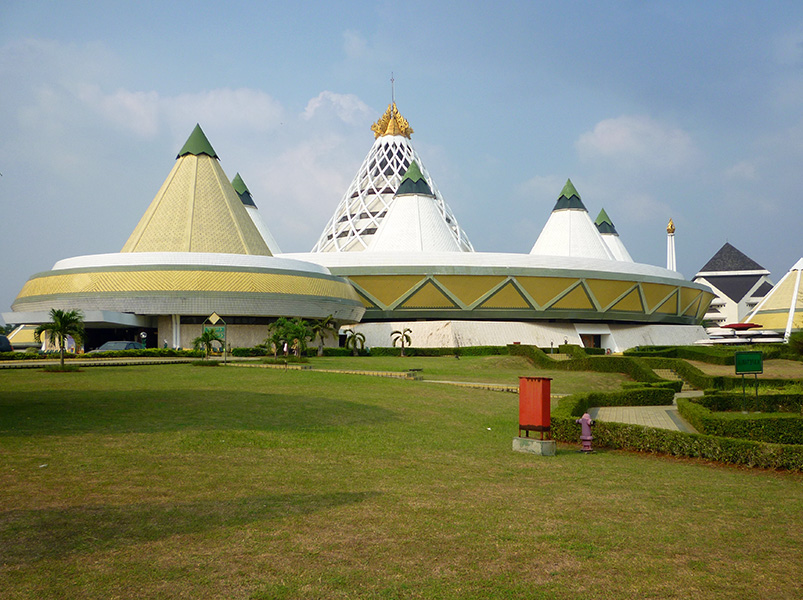
Louvre Museum, Paris, FRANCE
When you visit the Louvre Museum, there are signs leading you to the world’s most famous painting, the Mona Lisa. In front of the Mona Lisa, there are huge crowds taking photos. Another sign warns you, in ten languages, to beware of pickpockets.
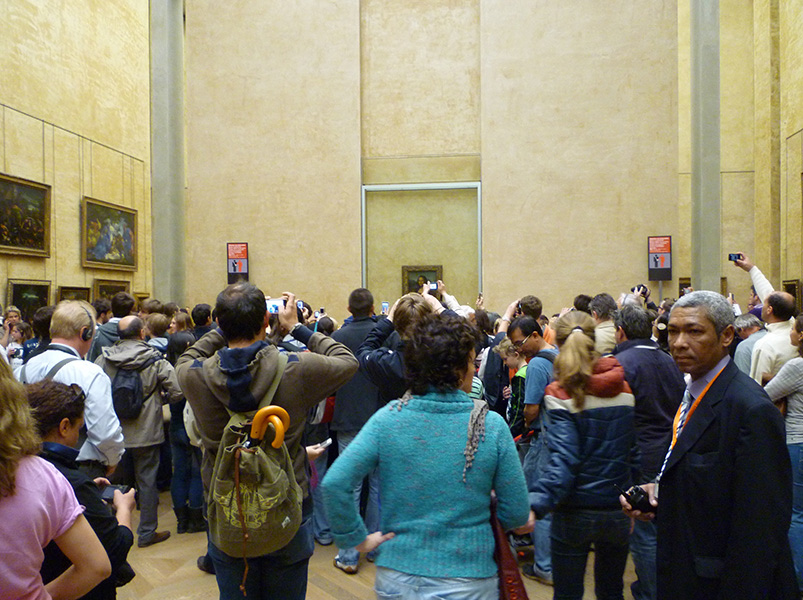
Familistère de Guise, FRANCE
Jean-Baptiste André Godin was an industrialist in the 19th century. His company made stoves. He wanted the best for his workers so he built a socialist-inspired housing palace next to his factory. Godin lived there too. After he died, his workers owned the company and they managed it as a collective. But it went broke and Godin’s dreams of worker emancipation came to an end. Now part of it is a museum. Some people still live there.
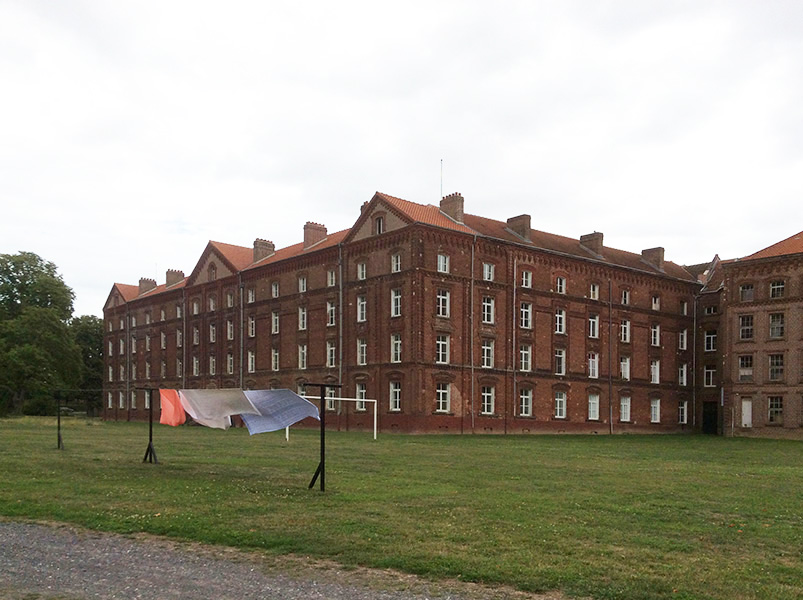
Saint Gobin, FRANCE
The mirrors in Versailles castle were made in the small northern town of Saint Gobin in the late 17th century. The site of the old royal glassworks is now a group of neglected buildings from different eras. Over the centuries, Saint Gobin became a huge multinational company that sells building materials. Today it is present in 67 countries and employs over 170,000 people but there is no sign of it here.
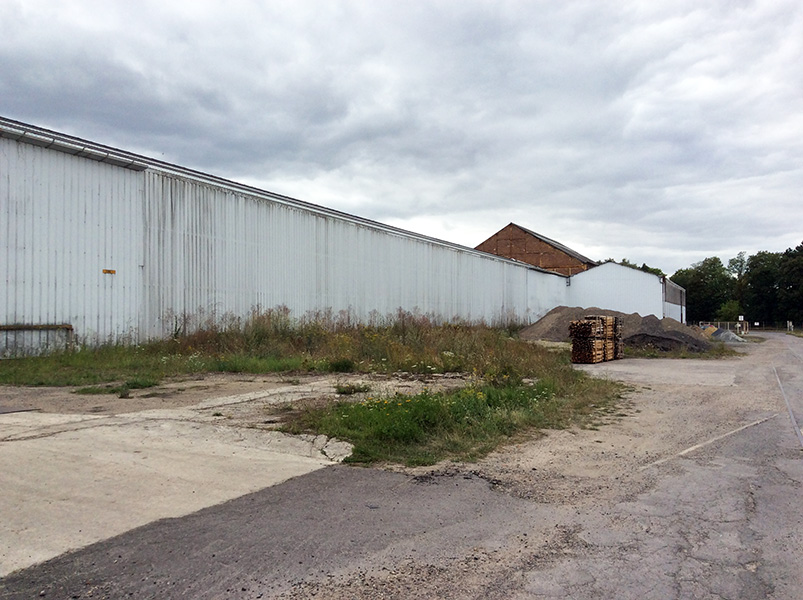
Decazeville, FRANCE
Decazeville used to have coal mines and steelworks but now, only this headframe remains. In 1886, there was a famous miners’ strike that ended in the death of the engineer Watrin. The miners were angry because their wages dropped from 150 – 200 francs a month in 1878 to 33 francs in 1886! They threw Watrin out of the window.
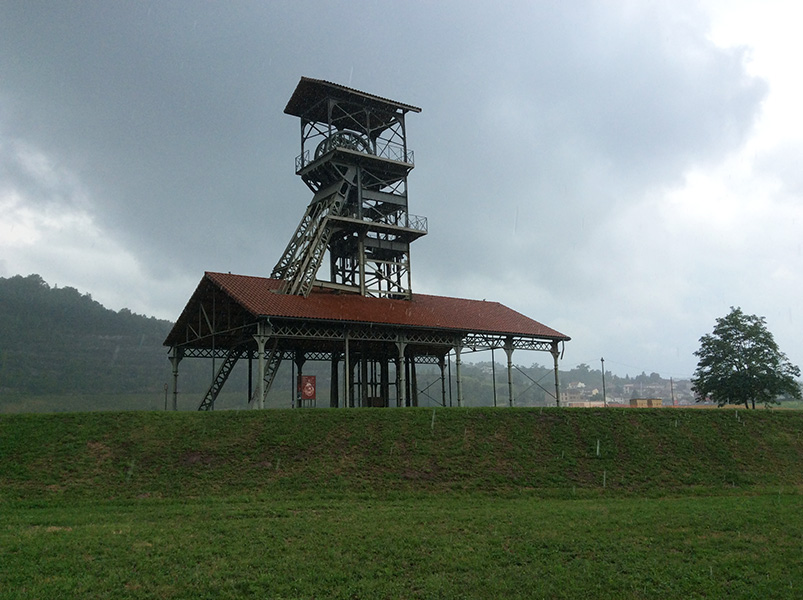
Nantes, FRANCE
This is an installation by the artist Sussana Fritscher at the art museum in Nantes. Thousands of almost-invisible threads are stretched on screens. It makes everything look out of focus. People walk through the maze, trying to find an opening. When someone crashes into a wall of threads, a museum guard rushes over and takes a photo of the person responsible.
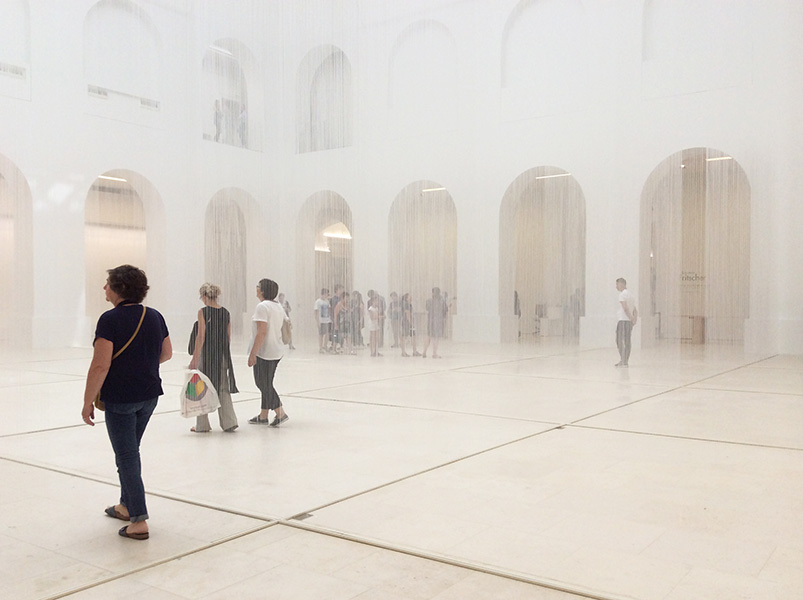
Seville, SPAIN
This is Seville cathedral. It is enormous and many people visit. They are doing restoration work inside and outside to keep it beautiful. But some of the smaller churches in Seville have weeds growing out of the roof. It makes them look like they have hairy armpits!
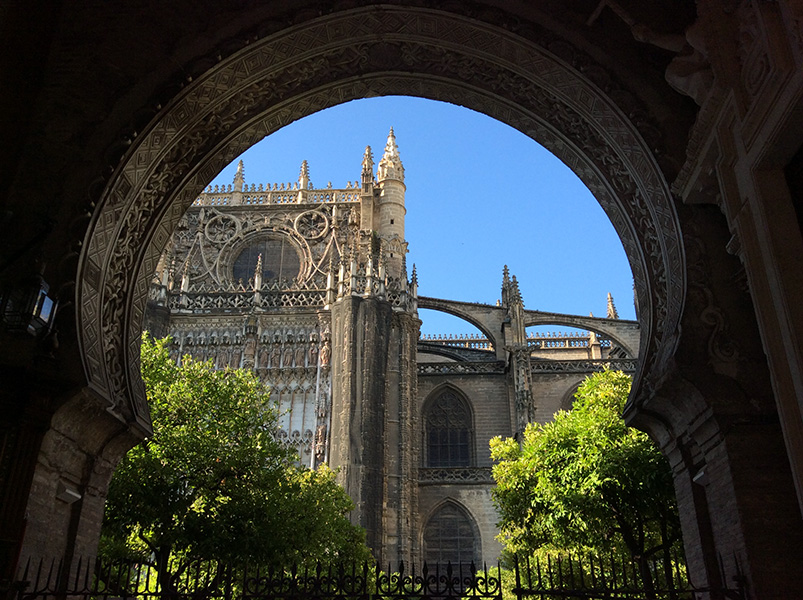
Karlsruhe, GERMANY
Karlsruhe was the first city to develop a vast tram network that connects the centre to all the towns in the region. It was so successful that too many people use it and the trams are very slow on the main street. 5 years ago, they decided to put the trams underground. This is the construction site next to the town hall. Work will finish in 2022 (they hope).
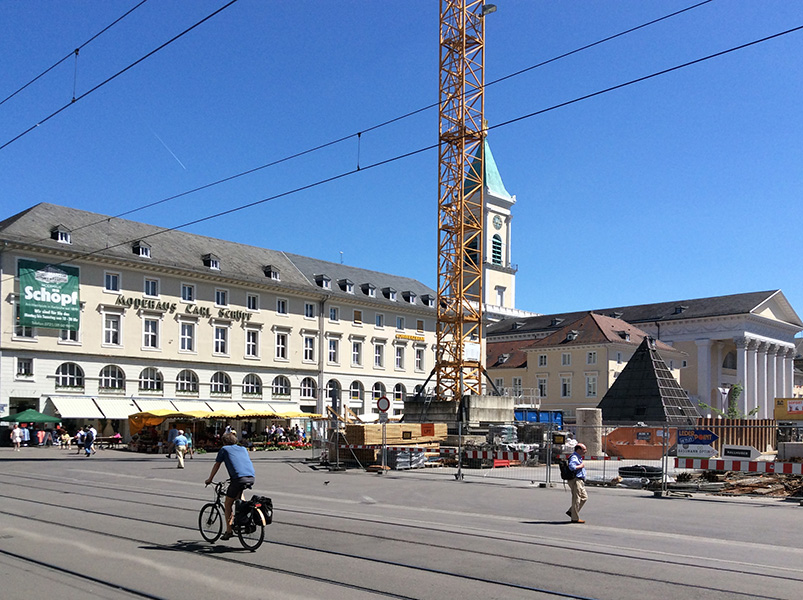
London, GREAT BRITAIN
This is the Millennium Bridge across the Thames River in London. It opened in the year 2000. But when too many people walked on it, the bridge moved from side to side. Everyone called it the wobbly bridge. So they closed it for a year and fixed the problem. The bridge closed again for a few days in 2007 but this time it was because of a dangerous storm.
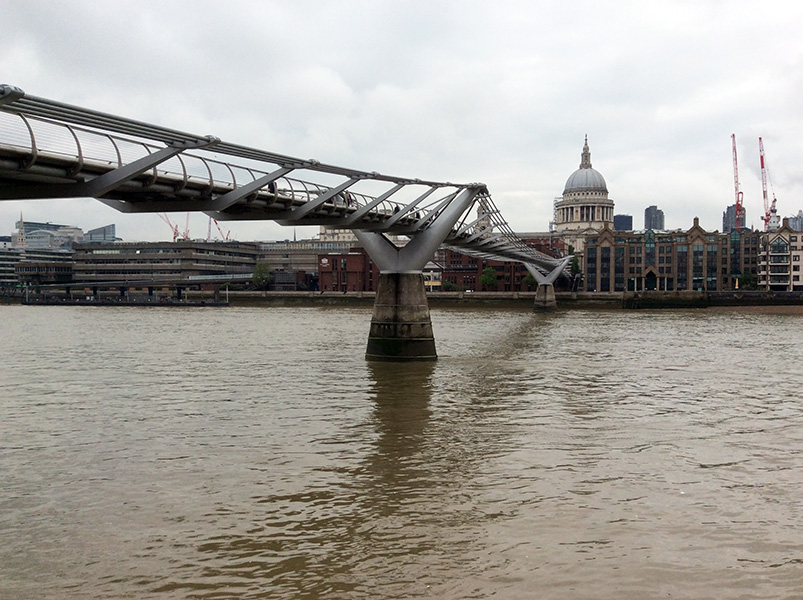
Covici, CROATIA
I visited some friends in a Croatian village called Covici. The war between Serbs and Croatians ended in 1995 but there are still landmines in some of the fields here. Signs tell you not to enter. If you walk on a landmine, you lose your legs or you die. Experts are demining all of Croatia and Serbia but it is slow.
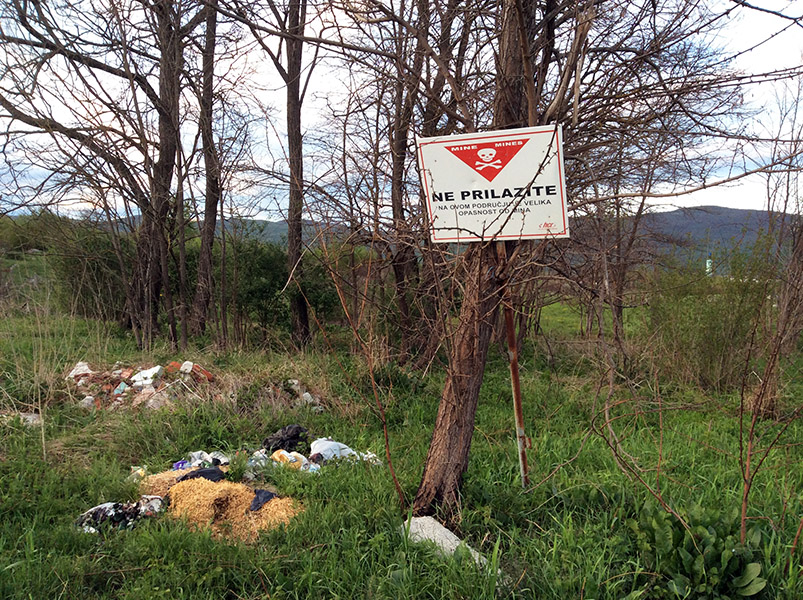
Ljubljana, SLOVENIA
Every year in May, Ljubljana has a running race. Three people have to run together for 12.5 km. They want the runners to help each other. The team’s result is the time of the last member to finish.
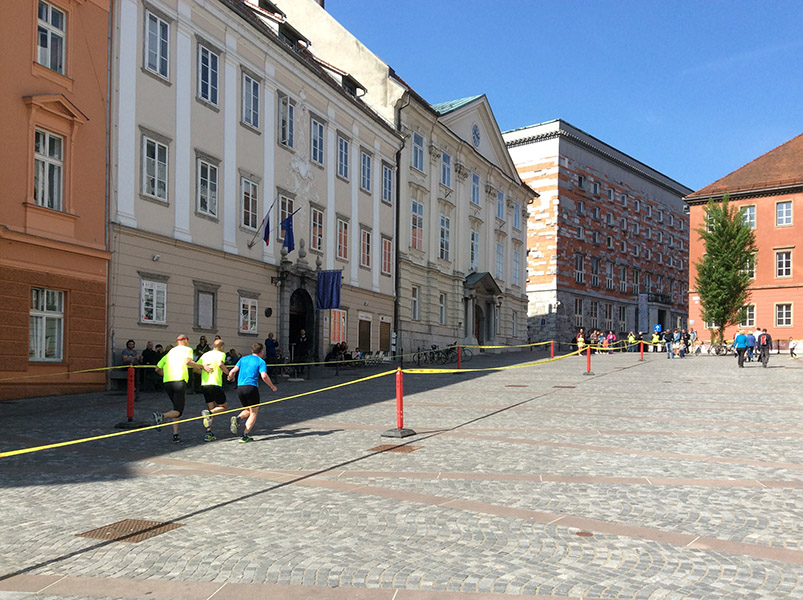
Ruhr, GERMANY
The Ruhr region in the west of Germany was once a centre of heavy industry, like the Lorraine district in the east of France. There are still factories everywhere but many of them are now closed. You can visit the different sites on the Industrial Heritage Trail. Some buildings are now museums or restaurants.
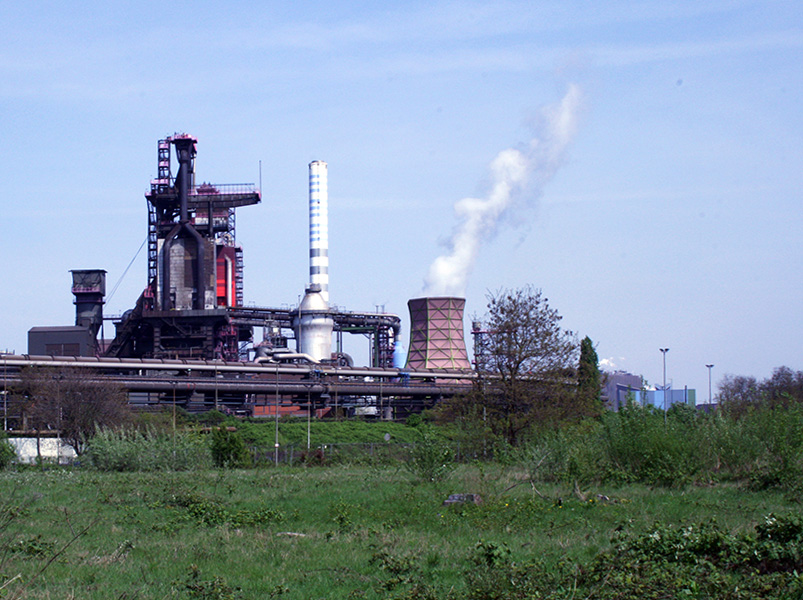
Florange, FRANCE
I was taking photos of the Arcelor-Mittal factory in Florange when a security guard stopped me. I had to erase all the photos, show my identity card and sign a declaration. They worry about terrorist attacks, angry unions, industrial espionage and environmental activists.
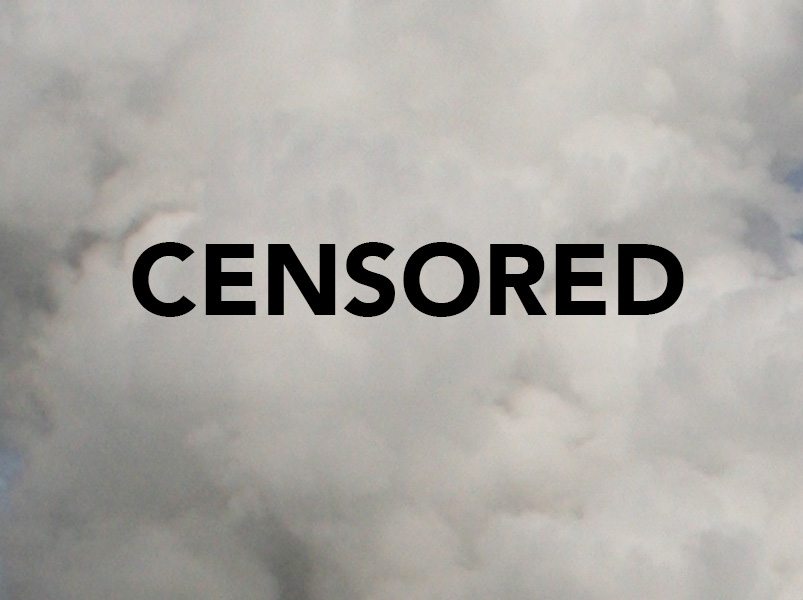
Longwy, FRANCE
Longwy was once the centre of the most important industrial zone in France. For centuries, most of its population worked in the steel industry. Senelle, the biggest factory, closed in 1987 and the site became a golf course. This piece from the blast furnace is the only trace left.
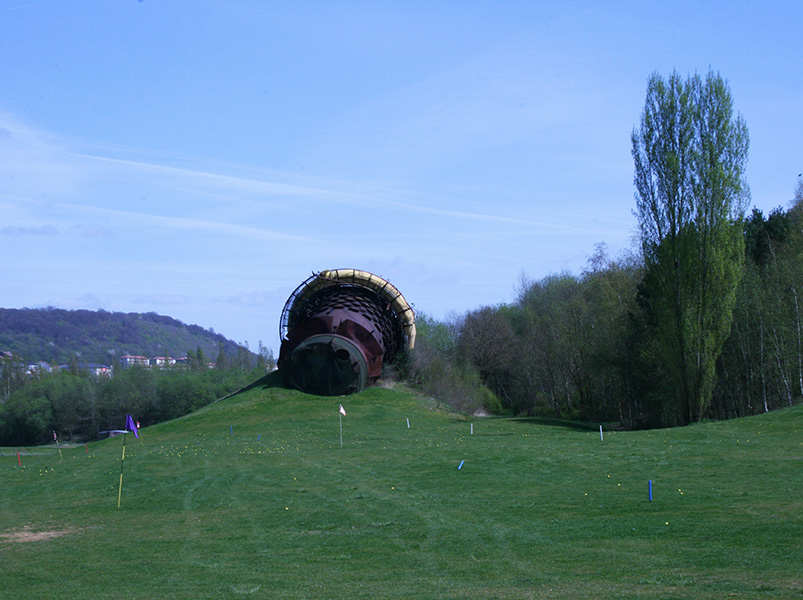
Budapest, HUNGARY
Most people in Hungary were not happy under communist rule, so when they became independent in 1989, they did not want to see communist era sculptures anymore. All the Soviet sculptures were removed from the streets of Budapest and put in a suburban park. I met a Hungarian man who thought it was a good way of dealing with the past. He said, “You get divorced. You don’t kill your wife.”
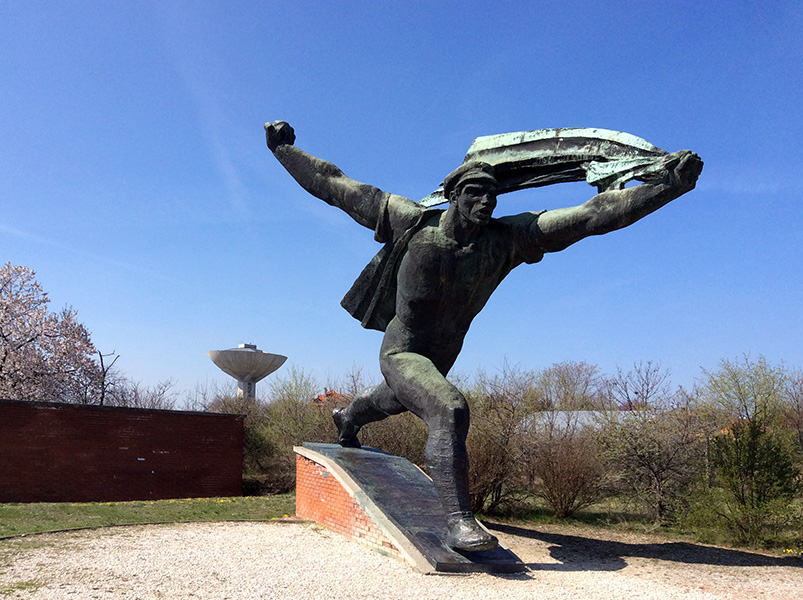
Budapest, HUNGARY
When I visit a new city, I like to take the bus to the end of the line to see life where the tourists don’t go. This is what I saw at the end of bus line 9 in Budapest.
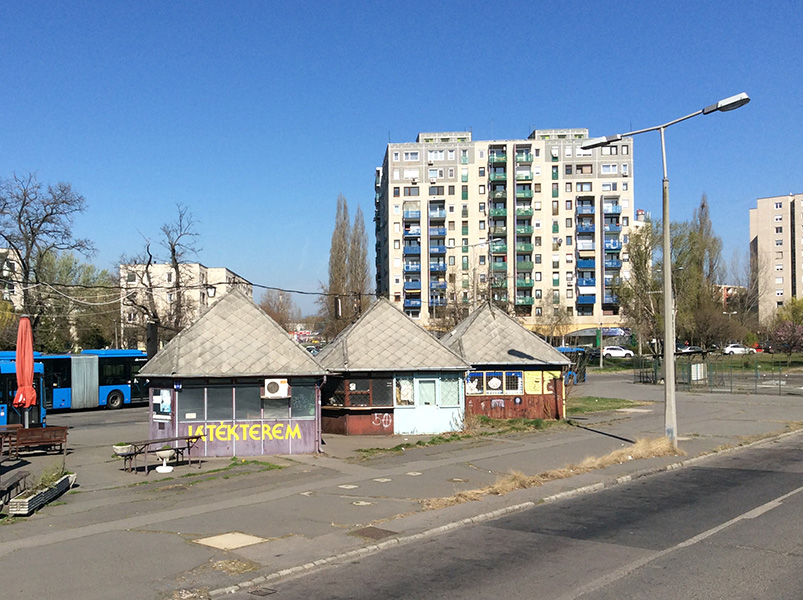
Tskaltubo, GEORGIA
This is a town that used to be a big tourist destination. Now most of the hotels are in ruins. There are many stray dogs with nothing to eat. Two dogs followed me when I visited Tskaltubo. They were no trouble until we saw a chained-up pig!

Kutaisi, GEORGIA
Kutaisi sits on the Rioni River and is the third biggest city in Georgia. There was a civil war in Georgia from 1988 to 1993 and times were hard. In 2012, Georgian Parliament moved to Kutaisi and a new airport opened. I left on the first day Georgians were allowed to travel to Europe without visas. The plane was full.
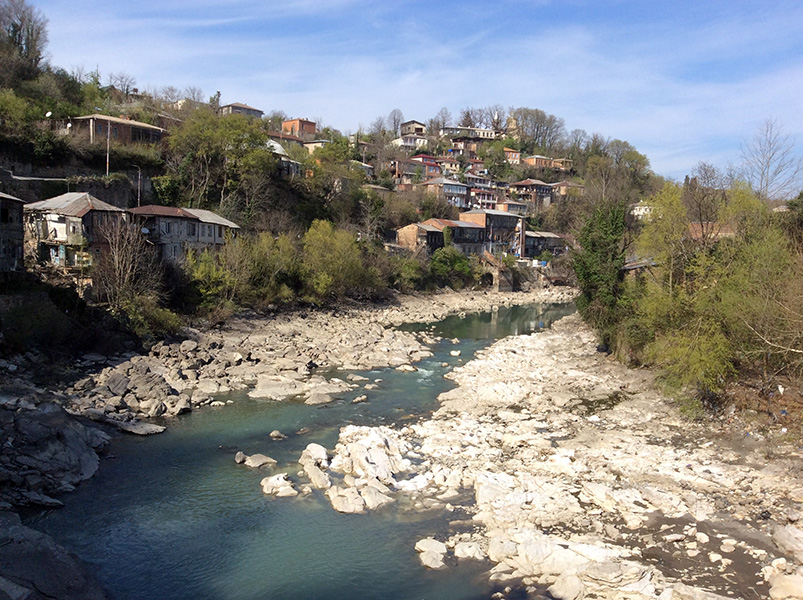
Thessalonica, GREECE
There was a big fire in Thessalonica in 1917 and most of the city was destroyed. There is not much old architecture except for Byzantine churches and underground ruins from Antiquity. Modern and very very old buildings live side by side.
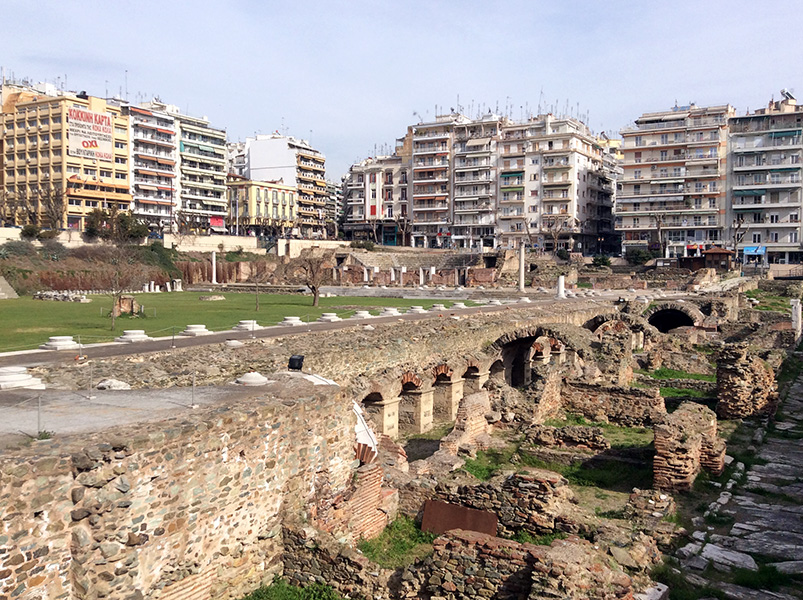
Kalambaka, GREECE
Above the town of Kalambaka, there are six monasteries sitting on cliffs. You can visit them. Women have to put a skirt over their jeans before they go inside. Monks still live there and they may be distracted from prayers if they see women’s thighs.
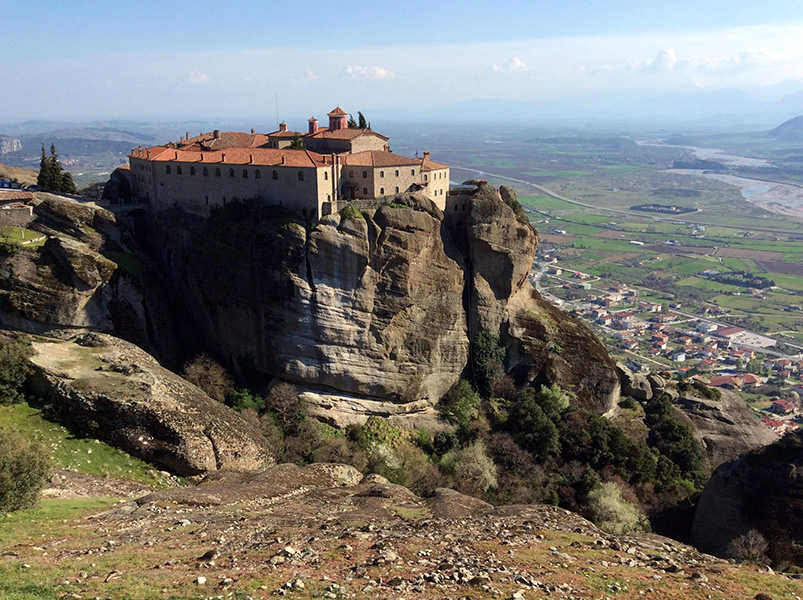
Litochoro, GREECE
I went to Litochoro to go hiking on Mount Olympus. In Greek mythology, Olympus was the home of the gods. The train station is 5 kilometres way from the village. Along the road, there are many shrines that look like Orthodox churches. The Greeks have changed their religion since Ancient times.
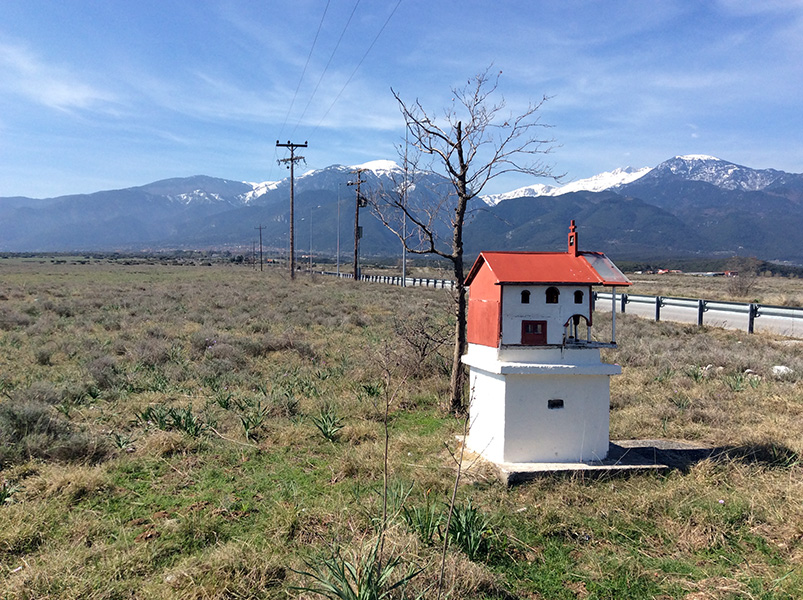
Katerini, GREECE
Katerini is a modern city in Greece. A man at a café told me that all the farmers from the villages moved to town 30 years ago to find jobs. They grow tobacco in the region but people smoke less now.
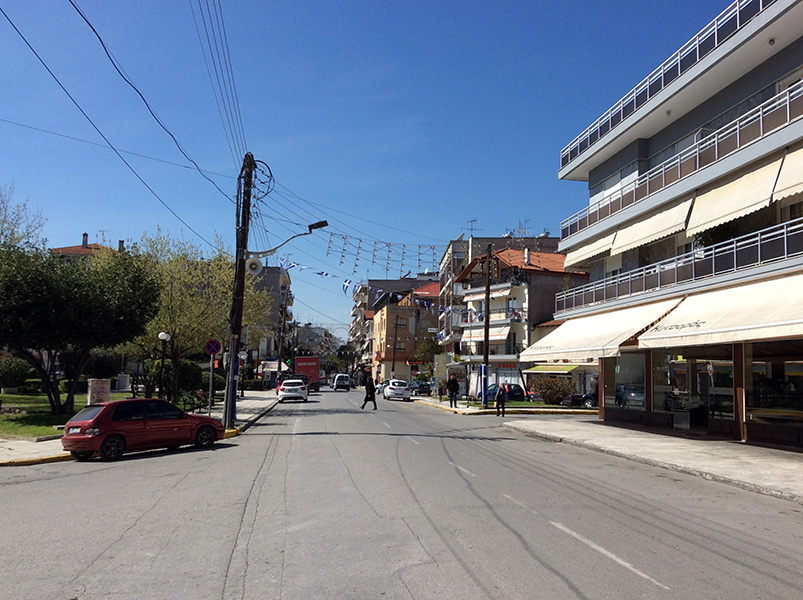
Paris, FRANCE
This is the South African embassy in Paris. When I first saw it, 27 years ago, South Africa was an apartheid state. It seemed like the windows were protected by the shields of riot police. I found it very scary. Apartheid ended in 1991. Now it just looks like any other example of architecture from the 1970s.
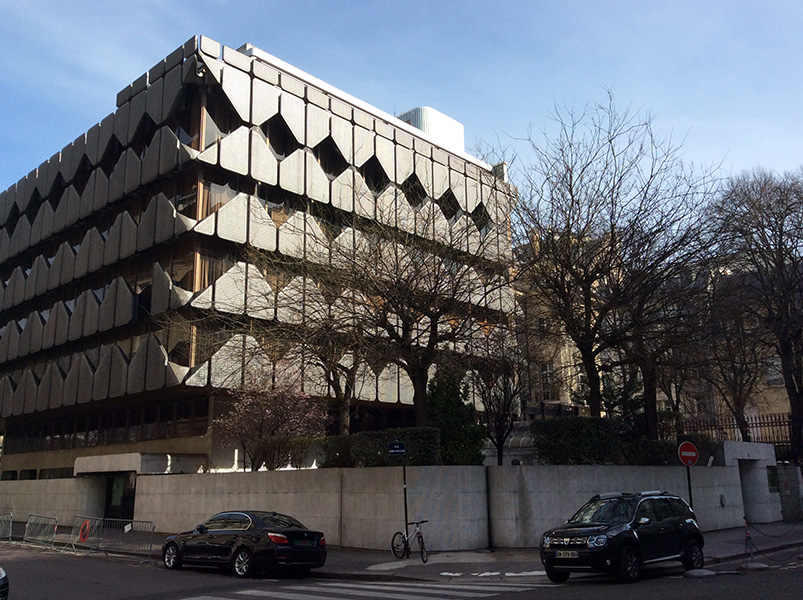
Dunkerque, FRANCE
This bunker was built by the Germans during World War II. 70 years after Dunkerque was liberated, an artist called Anonymous covered the bunker in a mosaic of mirrors. The artist says he sees people take wedding photos in front of the bunker now. It has become a tourist attraction.
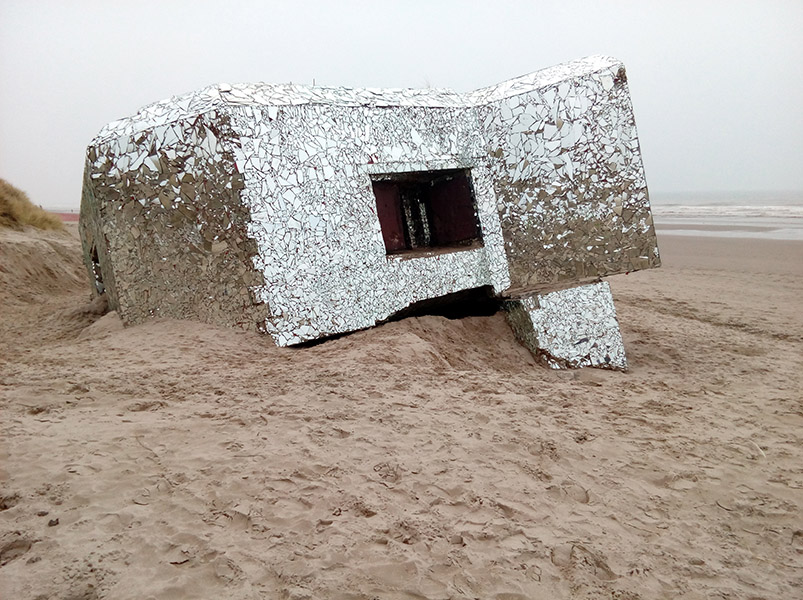
Vienna, AUSTRIA
In Vienna, they set up an ice skating rink in winter. People don’t skate around in circles – there is a circuit. You can skate along paths and under bridges. It’s a whole neighbourhood on ice!
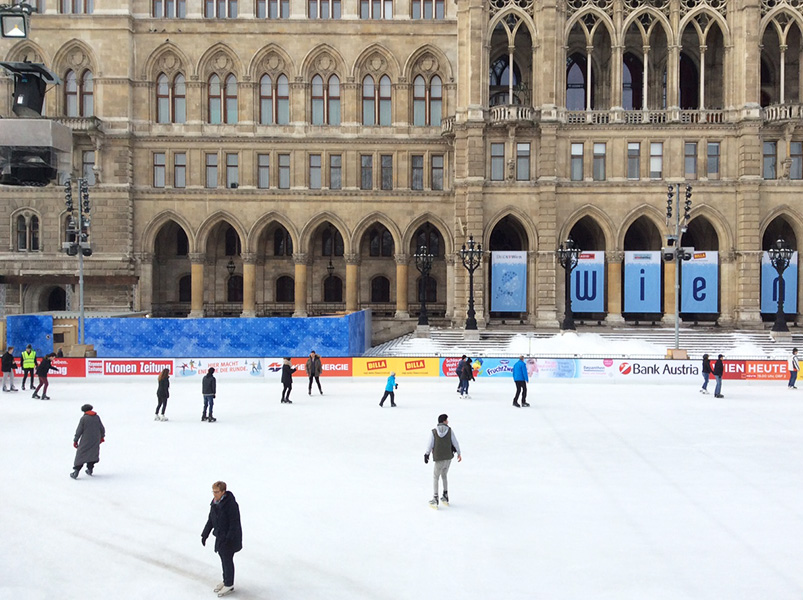
Valenciennes, FRANCE
Valenciennes is a small city in the north of France. Their ice skating rink is on the edge of town, next to the freeway.
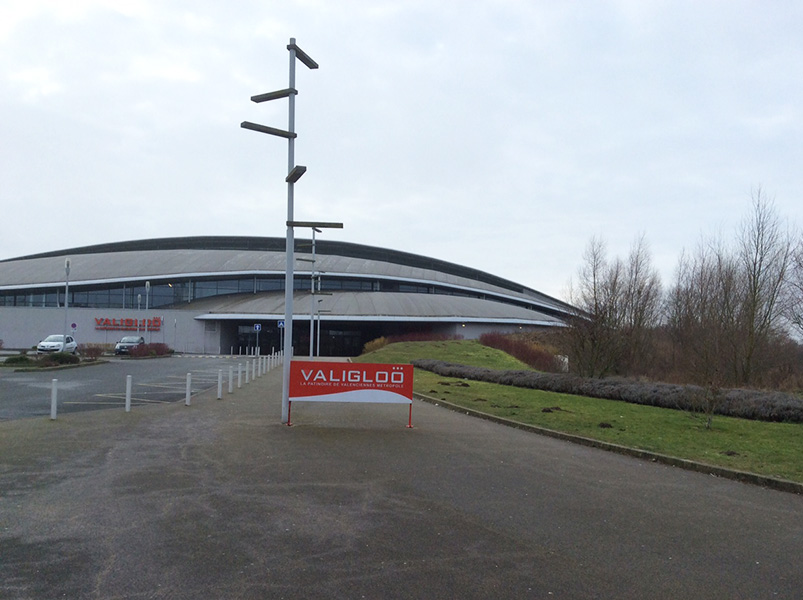
Beni Ansar, MOROCCO
I didn’t know if I was allowed to take photos in the industrial zone. So I tried to look official, as if I were doing an evaluation for an insurance company. Nobody bothered me. I left when a stray dog barked at me.
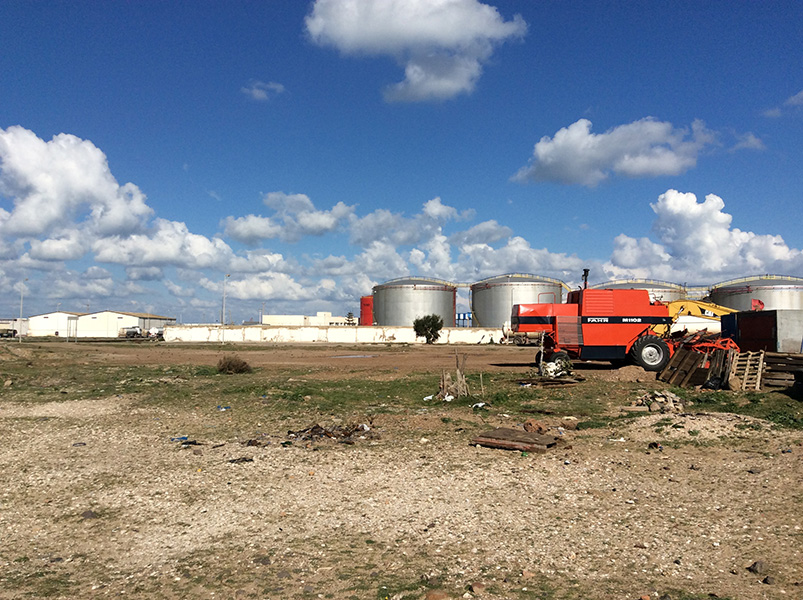
Melilla, SPAIN
Melilla is a tiny part of Spain in the north of Morocco. A lot of migrants want to go there because it is part of Europe. There is a very big fence around the city and it takes a long time to get through customs. But if you can get in, the people of Melilla welcome you.
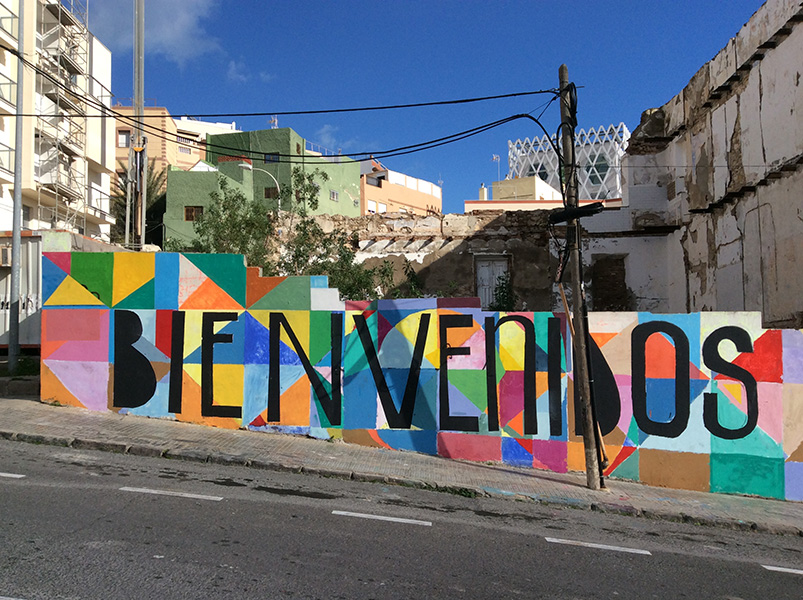
Al Aroui, MOROCCO
I walked around Al Aroui for two hours taking photos. I started walking back to the center of town. A bus came. I followed three boys onto the back of the bus. All the passengers were children. They laughed at me. I realized it was the school bus.
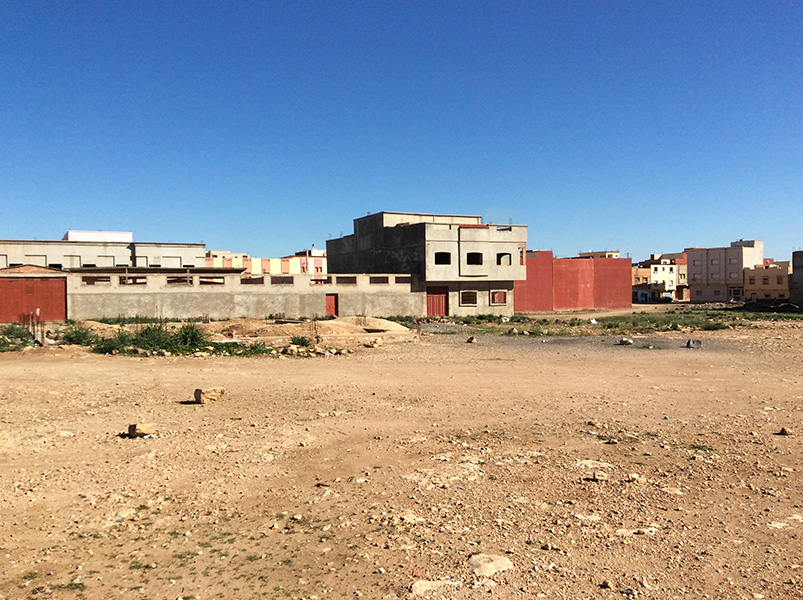
Nador, MOROCCO
The French Moroccans on the plane said there are only three reasons to go to Nador:
1. You have family there.
2. You are going somewhere else.
3. You are crazy.
I must be crazy because I LOVED Nador…
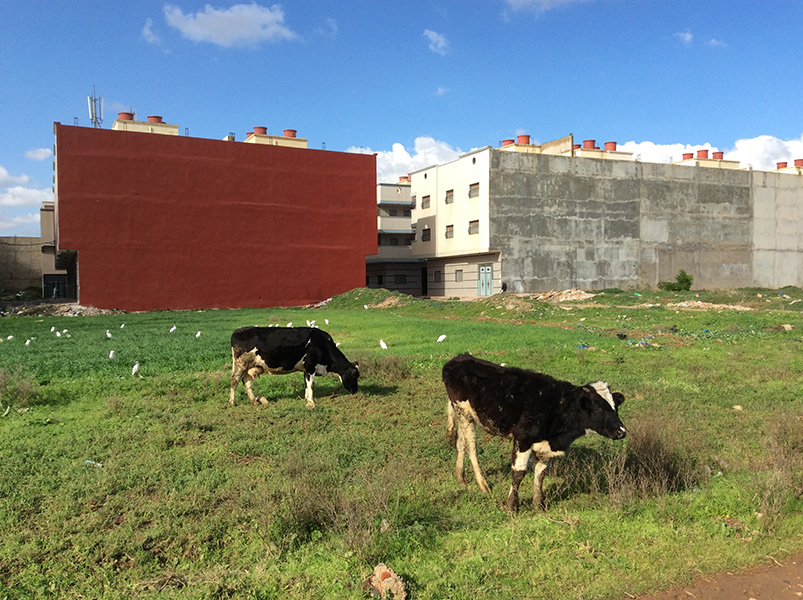
Porto, PORTUGAL
Porto is a beautiful historic city that is full of ruins. Buildings in Porto are never repaired and never demolished. Everywhere you go, there are buildings falling down. On the left you can see the Casa da musica, designed by superstar architect Rem Koolhaas. On the right are the neighbors.
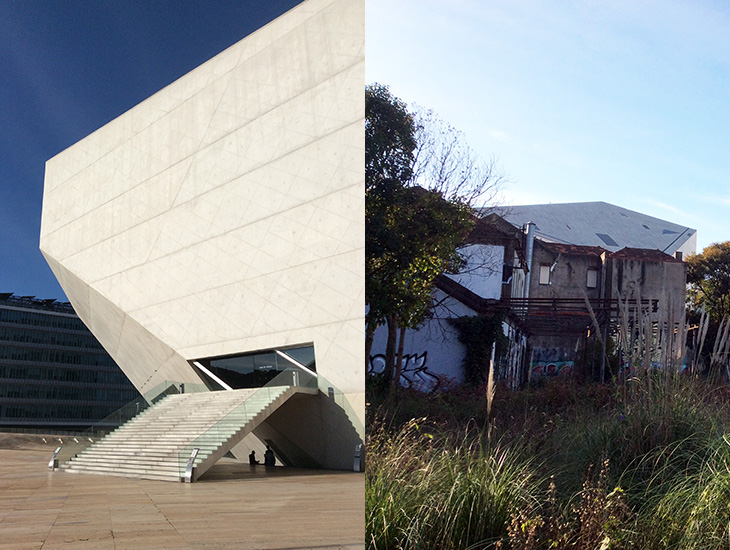
Le Havre, FRANCE
During World War II, the Allies bombed Le Havre so they could take back control of the city from the Nazis. 90% of the centre was destroyed. After the war, Auguste Perret was chosen to rebuild it. He and a team of 100 architects built 10,000 apartments using reinforced concrete. In 2005, UNESCO gave Le Havre a World Heritage listing. It is the only city in the world to get this recognition for its public housing.
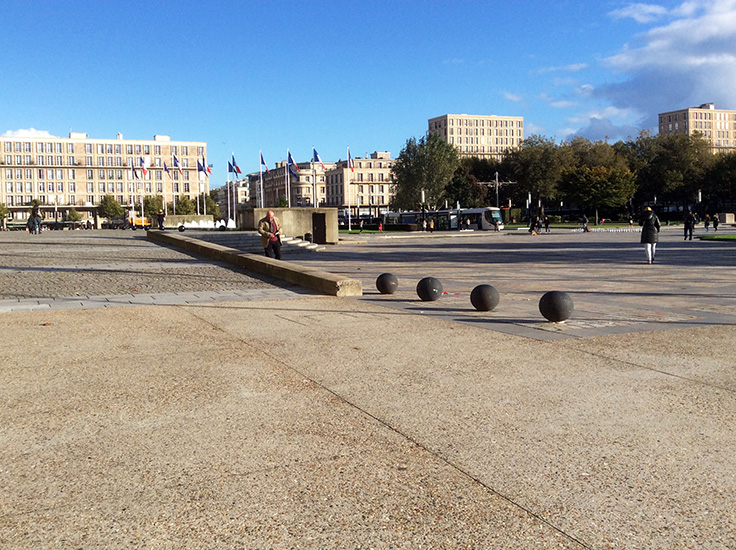
Cancale, FRANCE
Cancale is famous for its oysters. People come from all over the world to buy them from tents and eat them facing the sea. You throw the shells onto the sand when you are finished. The oyster sellers make sure there are always at least three tents open, even in winter. Like pharmacies that take turns to open on Sunday, they are providing a public service.
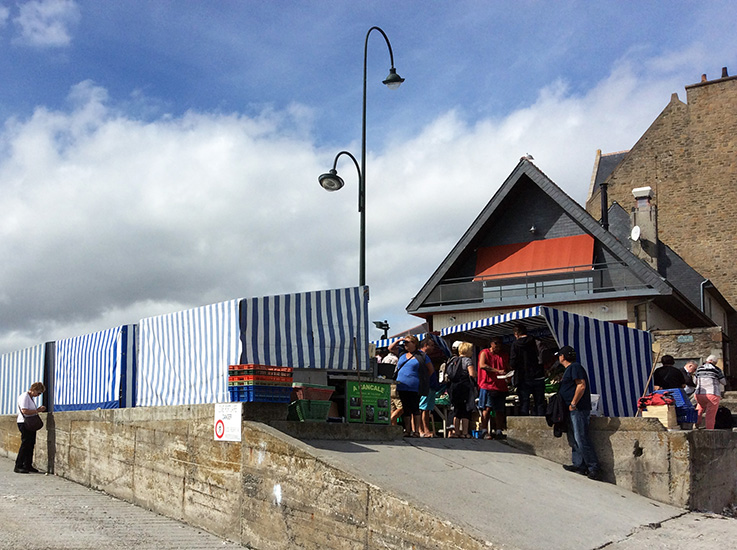
Grampians National Park, Victoria, AUSTRALIA
Australia has bush fires every year. They often destroy people’s homes. Here, in the Grampians National Park, trees are growing back one year after a devastating fire. Most of the kangaroos in the area have moved to the nearest town of Halls Gap, where they eat grass on the football field.
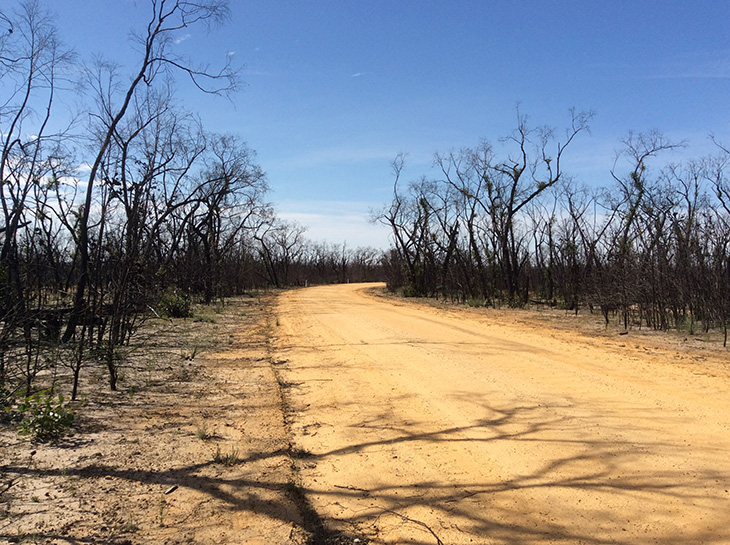
Désert de Retz, Chambourcy, FRANCE
This is the Destroyed Column in a park called the Désert de Retz. It was built in 1781 as a house for a man called Mr. de Monville. He imagined it as the remains of an enormous temple. The cracks in the walls are part of the design.
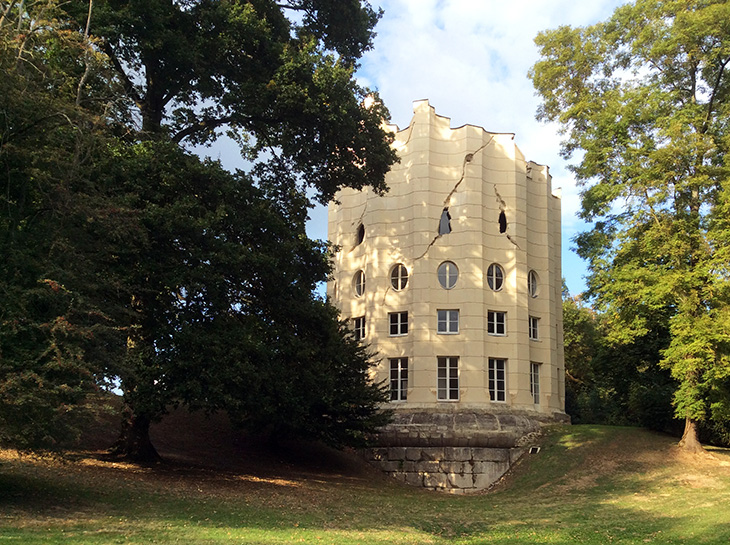
Geelong, Victoria, AUSTRALIA
Geelong is a city on the south coast of Australia. It used to be a one of the biggest manufacturing centers in the country but factories and power plants are closing. This is an old cement factory that closed many years ago. There are houses all around it. It sits empty in a suburban street, like a huge monument to the industrial past.
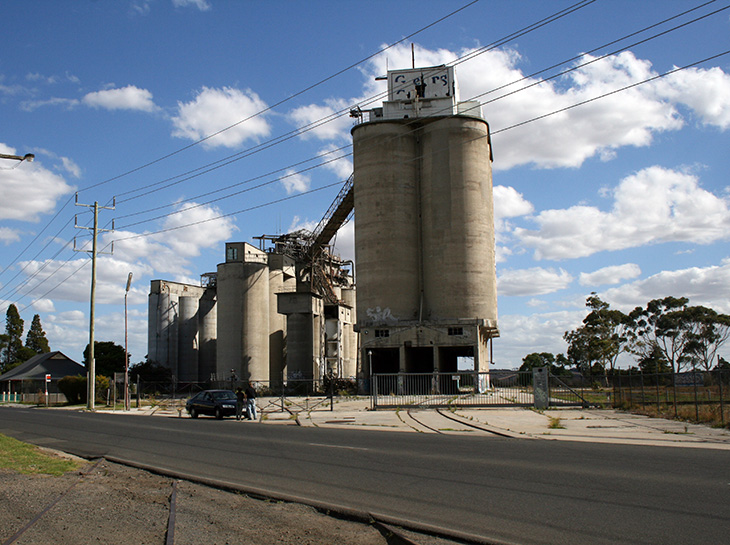
Skopje, MACEDONIA
Macedonia used to be part of Yugoslavia. But after the war in the 1990’s, it became an independent country, with Skopje as its capital. Now they are constructing new monuments in the old style. Columns are made of concrete, not marble. It looks like a mix of the Roman Empire and Las Vegas. Are they building the future or remaking the past?
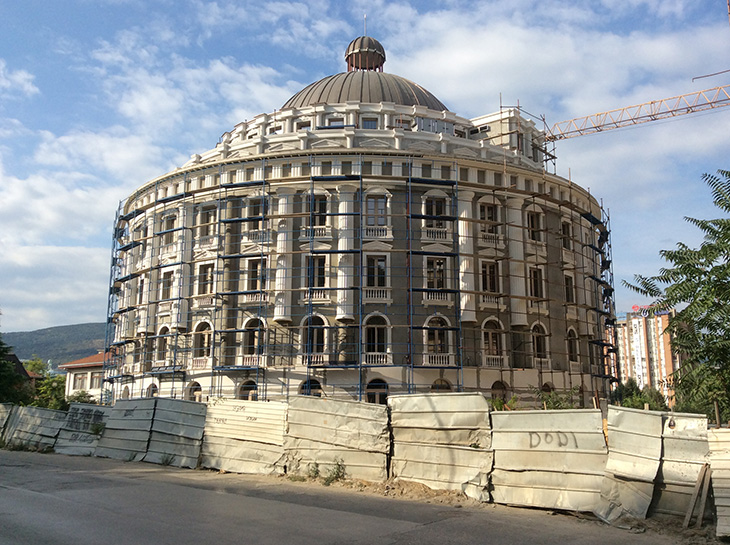
Canal Saint Martin, Paris, FRANCE
Sometimes, the City of Paris cleans its canal. First, they catch all the fish and move them somewhere else. Then they block off the section that they want to clean and empty out the water. Lots of things lie at the bottom of the canal, especially bicycles and supermarket trolleys. When they emptied the canal in 2001, they found gold coins and two bombs from World War II.
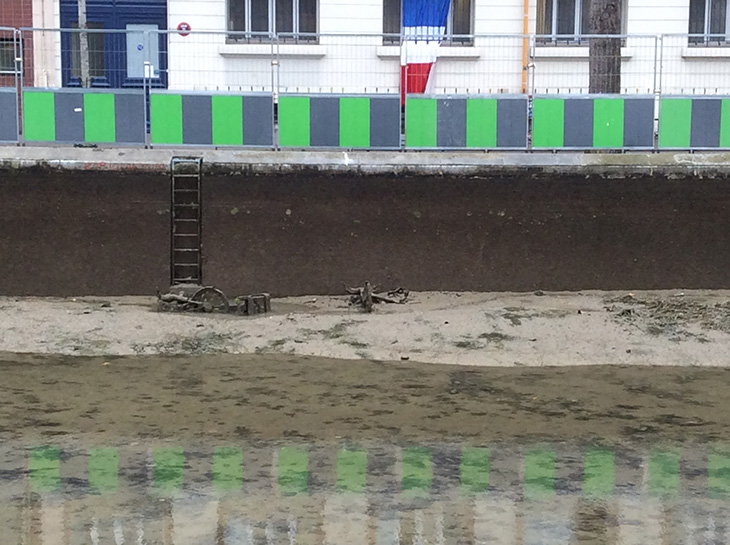
Beach cabins, Gouville-sur-Mer, FRANCE
In the sand dunes of Gouville-sur-Mer, there are 69 beach cabins. They are white with rooftops in different colors. Some of them are over 100 years old. When it became fashionable to swim in the sea, at the start of the 20th century, a hotel owner built them for his guests. He took them to the cabins in a horse-drawn carriage. They could change into their swimming costumes, shelter from the wind and eat meals. Today, the cabins belong to private owners, who are not allowed to stay the night or use them for storage.
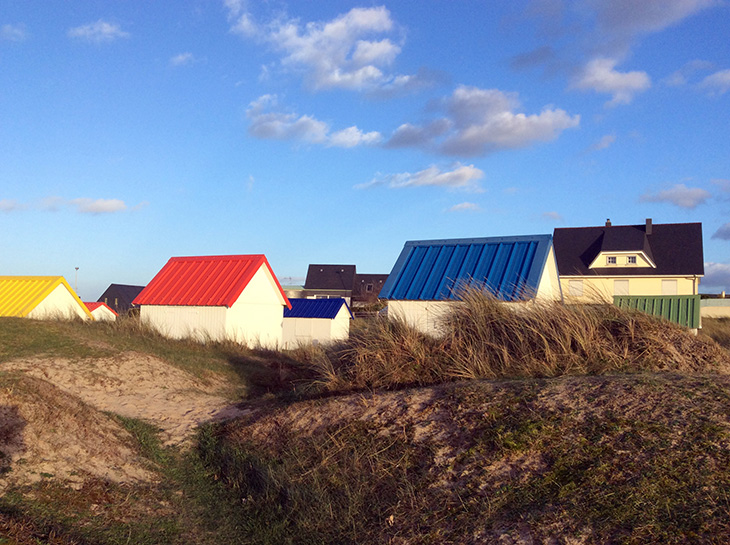
Fontenelle cemetery, Naples, ITALY
The Fontanelle cemetery in Naples is in a big cave in the side of a hill. In it, you can see the bones of people who died without a tomb. Mostly they were poor or victims of epidemics. Some people used to worship the skulls. They built little houses for them, asked them favors and brought them flowers. In the mid 20th century, the church decided to stop the practice and closed the cemetery. Today it is a tourist attraction.
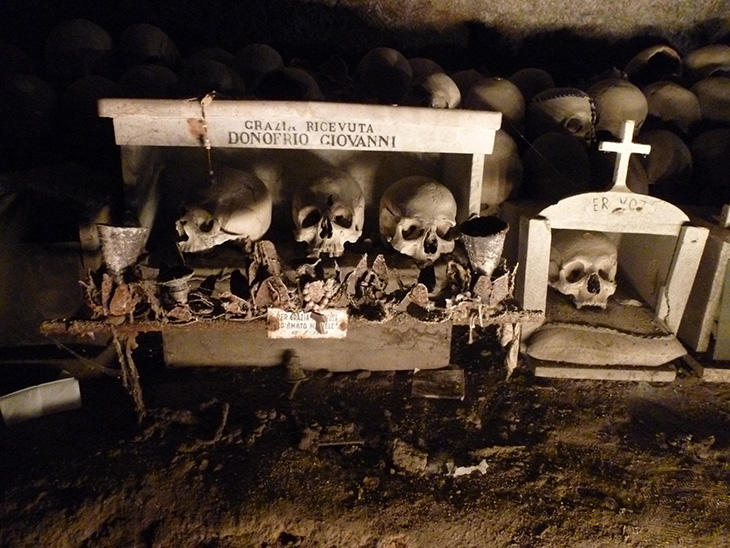
Daylesford, AUSTRALIA
Daylesford is a small town two hours drive away from Melbourne. It seems to have more cafes than inhabitants but only one of them has wifi. When I asked a cafe owner why she didn’t provide an internet connection, she said, “We tried wifi but our customers stopped talking to each other.”
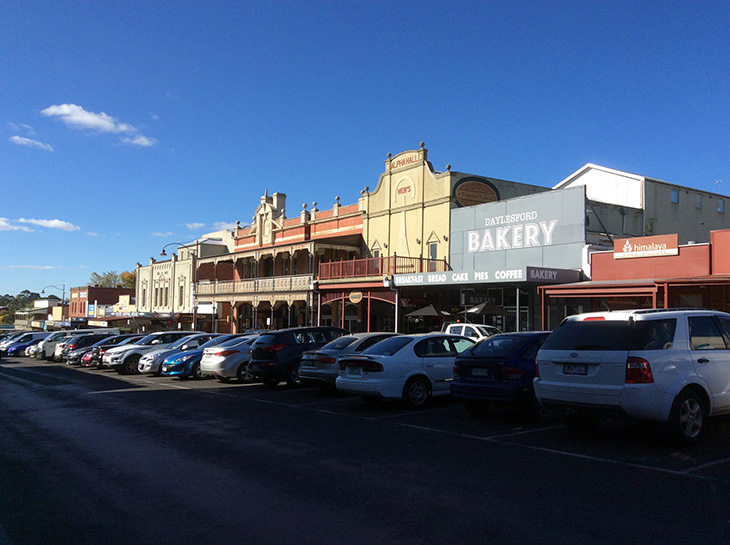
Goussainville, vieux village, FRANCE
The old village of Goussainville is supposed to be a ghost town. It was evacuated when they built an airport nearby because the planes pass overhead and it is very noisy. Most of the houses are empty and bricked up but some are occupied. There is an abandoned castle. A resident told me the municipality wants to rehabilitate the village. They are thinking of putting the water back on.
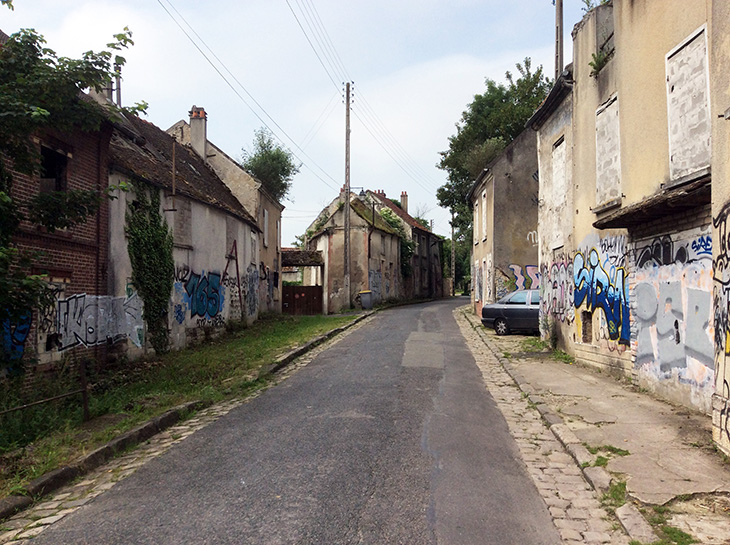
Television, AUSTRALIA
Australian Rules football is only played in Australia. Often the games degenerate into big fights involving every player on the field. Afterwards, they all have to pay a fine of $1,000. The average annual salary for a professional Australian football player is over $300,000. Some of them earn over $1,000,000 a year.
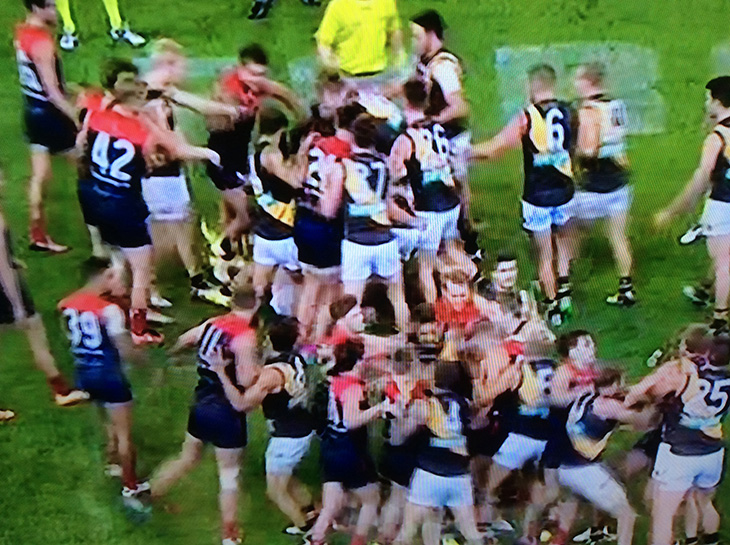
Australia
In Australia, cigarette packets show horrible photos of the diseases you get from smoking. There are stories about people who got cancer from smoking and a number to call if you want to quit. Shops that sell cigarettes have to hide them in drawers. It is illegal to advertise cigarettes. The smoking rate of Australians has almost halved since 1980. Today 13.3% of adults smoke.
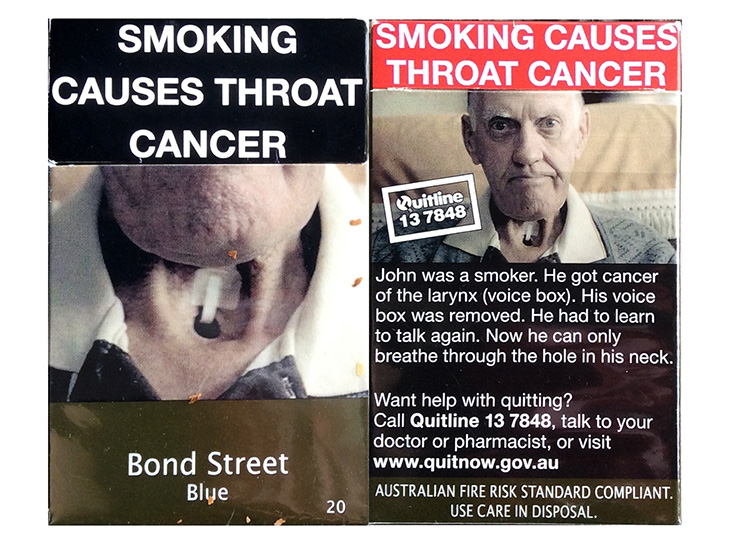
Putrajaya, MALAYSIA
Putrajaya is the administrative capital of Malaysia. It is a planned city. The government moved there in 1999 because there was too much traffic in Kuala Lumpur, the old capital. The population in Putrajaya was supposed to reach 300,000 but today, there are only 88,300 people. Traffic is not a problem here.
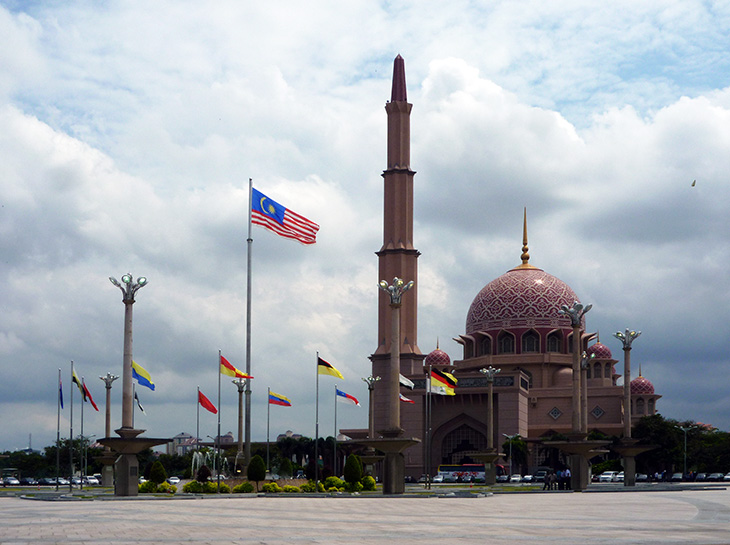
Arles, FRANCE
When the Luma Foundation in Arles wanted a spectacular building for their exhibitions, they asked the American architect, Frank Gehry, to design it. Near the construction site, you can see a documentary about Frank Gehry. Experts talk about the architect and his work. Frank Gehry’s psychoanalyst says, “When most people come to see me, they want to get along better with their parents or their partners. When artists come to see me, they want to change the world.”
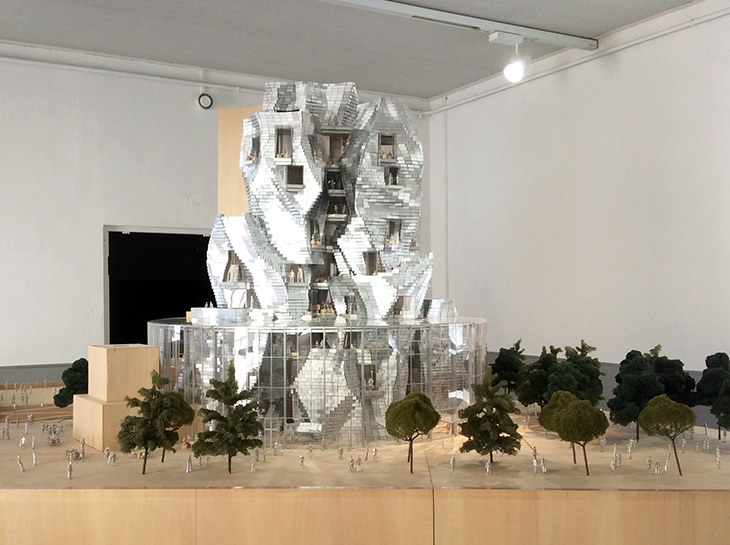
Feltre, ITALY
A palio is an Italian horse race. The most famous one is in Sienna but there is also a smaller one in Feltre (population 20,560). It started in the fourteenth century. The horses and the riders wear the costumes of their district, which is called a “contrade”. In Feltre, there are four teams and their emblems are painted on the roads. This one is the Port’Oria emblem.
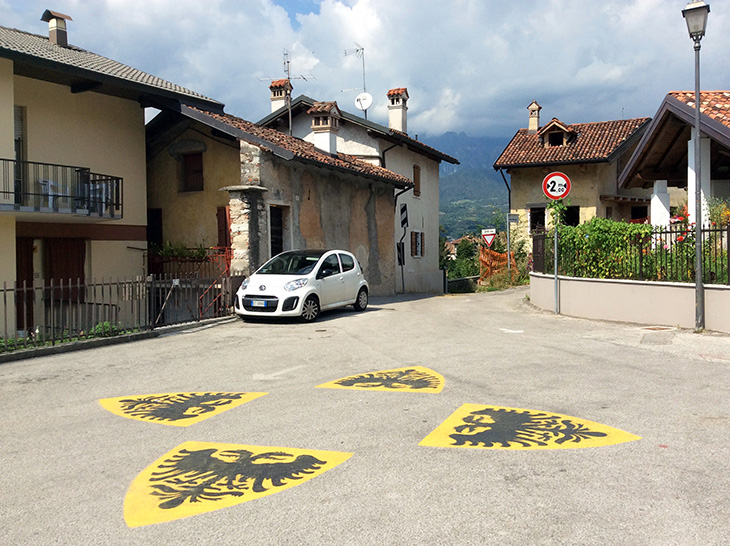
Tregwainton kitchen gardens, Cornwall, ENGLAND
This is one of the vegetable gardens that was started during World War II. Britain imported most of its food in the 1940’s and was very vulnerable to blockades. The government wanted people to grow food and share it so they wouldn’t starve. Many of the gardens still exist today. The scarecrow is supposed to be the champion runner, Usain Bolt. It was made by local school children.
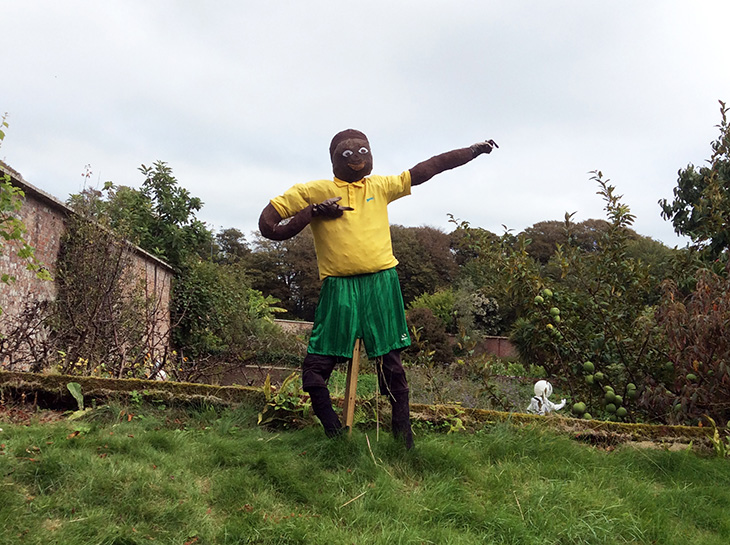
Porcupine Ridge, AUSTRALIA
Australia Post is a government owned company that distributes letters and parcels all over the country. People send fewer letters these days so to remain profitable, post offices sells all sorts of things: books, chocolate, teddy bears, travel insurance, etc. Mail is no longer delivered 5 days a week. In cities, three deliveries are free and if people want more, they can pay. Australia Post no longer directly employs delivery staff. Contractors compete for delivery routes and the cheapest offer wins. People complain that service is not what it used to be. The government hopes to privatize Australia Post soon and is reducing costs to make it attractive to investors.
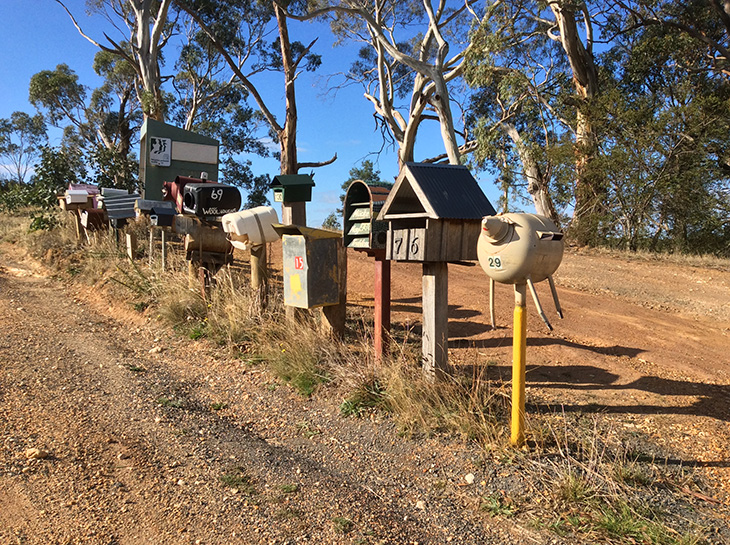
Nowa Huta, POLAND
Nowa Huta is a suburb of Krakow. It was built by the Soviets after World War II to house 100,000 workers at the new steel factory. They planned it as a perfect socialist suburb. The apartments are big and comfortable. There are wide avenues to stop fire spreading and there are lots of trees to soak up a nuclear blast. But the workers of Nowa Huta soon became anti-communist. They fought for permission to build a church (see photo). They joined the Solidarity strikes in the 1980’s and in 2004, they changed the name of the central square from Stalin Square to Ronald Regan Square, in honor of the American President who helped bring down the Soviet Union.
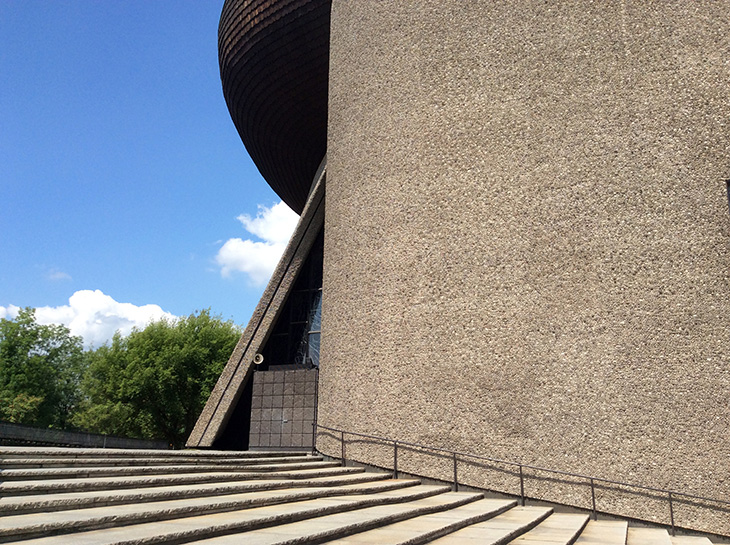
Irbene, LATVIA
Irbene was once a secret town in the west of Latvia. Soviet Russians built six parabolic antennas there to spy on all of Europe. When Latvia became independent again in 1991, four of the towers were dismantled. The two others were made inoperable because the Russians feared the West would use the towers to spy on them. A music video was made in one of the satellite dishes in the 1990’s. You can still see the marks left on the surface by the singer’s high heels.
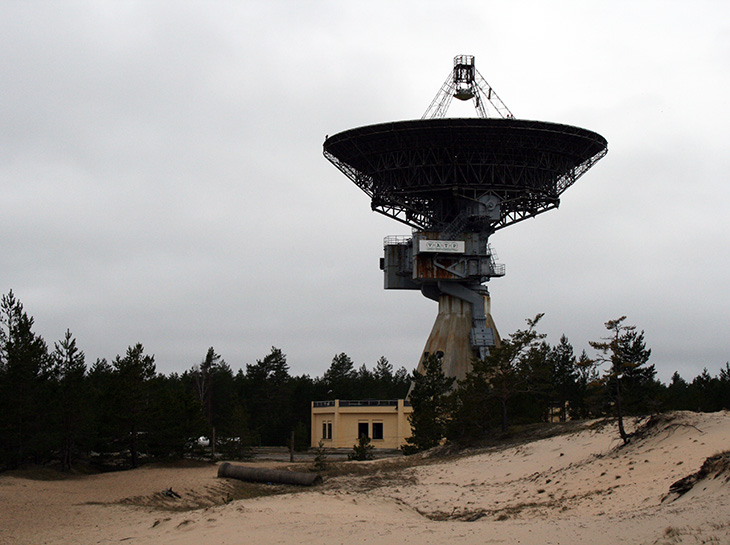
Mount Franklin, AUSTRALIA
Hepburn Springs is a region known for its mineral water. When a company decided to bottle the water and sell it, it chose the name of the nearest mountain, called Mount Franklin, even though it has no mineral water. There is a campground on Mount Franklin and the park rangers pump water from a creek into a tank so people can have showers. Local farmers laugh at tourists who take home bottles of the dirty creek water thinking it has medicinal properties.
